#look at the themes and patterns and narrative arc not just the pictures
Explore tagged Tumblr posts
Text
Rather than catastrophizing instances when Dazai isn't mentioned by name or physical presence in references to the Agency, consider:
that he fluidly moves between, shares unique and independent connections with, and influences each of the three pillars of the tripartite framework;
that when he isn't physically there, the others still feel his presence and are guided by his influence on them, strategies that he's relayed to them, and their trust in him; and
that the Agency as it is when they've reunited in Poe's book or in Fukuzawa's memory are together because of Dazai, as in he literally, in-text coordinates with Ango and Ranpo in regards to the former and he also recruited multiple members of the Agency, having brought in Atsushi and coached Kyouka through her entrance exam, in regards to the latter. I didn't even notice he wasn't there at first because I saw his shape in the shadows of the silhouettes of those who were.
That Dazai is there even when he isn't is an ongoing motif: Mori maintains Dazai's seat among the five executives; Chuuya enters Corruption despite Dazai's apparent death in Dead Apple; Chuuya, in part, resists Verlaine's nihilism because it reminded Chuuya of Dazai's, and even though Dazai was late in finding him, Chuuya wasn't in any danger of being lost with Dazai already so palpably there; Akutagawa understanda Kyouka has found her reason for living because it echoes what Dazai gave him through the Port Mafia, with Dazai appearing only as an impression and in implication; Ango explicitly defies Taneda's orders and his hierarchal obligations to the Special Division because he trusts Dazai enough to follow Dazai's heart on the matter (literally and figuratively); Atsushi visualizes Dazai when he's alone and paralyzed by internal conflict and when he does, the others appear around him too; while imprisoned, Kyouka was so alone there wasn't even anyone captaining the drone she was in until Dazai's voice cut through her isolation to relate to her and coach her through her entrance exam; etc., etc.
It's why Fyodor can't outmaneuver Dazai. Dazai tells Fyodor that Fyodor failed because Dazai had allies and Fyodor didn't. The guards physically present in Meursault with them were under Fyodor's control, while Dazai had no one in the prison with him except for a fellow inmate he could not access or speak to directly. Everyone Dazai relied on, he relied on without being able to see or hear or touch them, while physically surrounded by the presence of Fyodor's vampires.
But it didn't matter because Dazai's bonds aren't so weak that he needs to see them to know they're there, nor are they limited by organizational affiliation. The truth of the matter was that Fyodor had no one, and Dazai was surrounded by his people in substance if not in form— meaning only Fyodor tried to play chess in a game of Go.
Dazai does not have to be physically there to be present, anymore than the others have to be with him in Meursault for him to see them and rely on them and know they are supporting him as much as he's supporting them. Dazai's home and place of belonging also isn't limited to the Agency; he's theirs, but they share him with the Port Mafia and the Special Division.
He's like Natsume in that way, and like Natsume, he's uniquely capable of weaving between the tripartite framework's three pillars to remind them of and coordinate their efforts towards their shared goal of protecting Yokohama.
Thus, if you want to know where he is in a scene, sometimes you have to look for him in the connective tissue rather than the organ. Or, in more literary terms, what is essential is invisible to the eye.
#bsd#bungo stray dogs#bsd chapter 113#bsd dazai#armed detective agency#look at the themes and patterns and narrative arc not just the pictures
269 notes
·
View notes
Note
saw your monster meta when i was searching through the tumblr tag. how did you understand johan's perfect suicide, and why did he come to such a conclusion?
Hello anon!
I am happy you read my meta and came here to ask!
I think that my meta on Johan, Nina and Tenma partly answers you:
These repetitive actions give birth to a pattern Johan himself is unable to leave. He is trapped in his own past and so he keeps reproducing it together with the fairy tales he used to read as a child.
This behaviour underlines a contradiction Johan has. On one hand he wants to develop relationships with others and this is why he keeps searching for new parental figures. On the other hand he is not able to properly have relationships which are not manipulative or exploitative. All in all he is never able to make “the monster inside of him” rest. This restless monster who keeps getting stronger is not really his violent side, as Nina thinks at first, but it is nothing more than the emptiness he feels because he does not really understand who he is. He can’t give any meaning to his life and so he keeps searching for one, does not find it, accepts nihilism and repeats. In a sense, he fails in his search because he has already given up on it before starting it. He has already accepted the vision of the doomsday:

Wolf sees it before dying and calls it the land of the nameless.Having a name in the story is symbolic of having an identity and this means mostly that someone knows you. If nobody can’t call your name, then you do not really exist and there is no proof of your existence. Relationships with others define the person to an extent and the land of the nameless is a dimension where all these relationships are lost and the individual is alone in front of nothing. It is a place full of solitude. This landscape is symbolic of Johan’s mind and of his vision of the world.
In short, Johan is a nihilistic character and his perfect suicide is just another declination of this nihilism.
Monster is a masterpiece on all levels, but I think its strongest part are its themes. The story’s main theme is the value of life. This topic is often treated superficially in stories. It is either discarded for a pragmatic approach or conveyed in a simplicistic and moralistic way. Monster manages to treat it honestly and to convey a strong and harsh narrative about it.
It all starts with this question: “Are all lives equal?”
Tenma embodys the the message the story wants to convey. Yeah, all lives are equals, not only that, but all lives have value. This is why Tenma is a doctor. It is because he has sworn to protect life.
His point of view is challenged by a different point of view:

It is not true that all lives are equals. Some lives have less value than others, so they can be sacrificed to protect the most important ones.
Johan’s point of view is even more extreme. It is not just that he thinks lives have different values. He thinks life itself is meaningless. All lives are equals in the sense that they have no value at all:

Why is this point of view so dangerous though? And why can’t someone refuse Johan’s complete nihilism, but accept that sometimes it is necessary to kill a person to save many others? Why does the story refuse to say Johan’s life has no value? Because if it is false that all lives have equal value, then it means your own life might be meaningless. It means you have to give your own life value or that someone else has to give your life value for you. It means you might have to fight and to steal from others, so that your life has value. It also means that if your life has no value, then you do not deserve to be saved.
The root of Monster’s thematic conflict is not a moralistic one, but an existentialist one. If Tenma or Nina kill Johan, then they are accepting their lives have no meaning.
If Tenma kills Johan, then he is not a true doctor and if Tenma is not a true doctors, then true doctors do not exist. It means his corrupted superiors were right.
If Nina kills Johan, then she is refusing to face her past and her responsibility in how things turned out and her wounds can never be healed.
If Lunge and Eva tie their value to external factors, like their jobs or their love stories, then once they lose the external factor, they become nobodies.
So, Johan is a character that does not value life, be it his own life or others’. This is why he can face death so many times without fear. And this is also why he drives people to their suicides so often throughout the story. He does not even do it out of malice. He does it out of emptiness.
Johan’s perfect suicide is an act that completely negates the value of life. Suicide itself does it, since it means you are refusing your own life. Still, Johan as the embodyment of nihilism looks for an even more extreme gesture.
This is why his perfect suicide is said to be
a) Johan killing himself together with everyone who knows him (like the Nameless Monster)
b) Johan reproducing the Red Rose Mansion massacre, killing Bonaparta (his father figure) and having Tenma (his other father figure) killing him (like The God of Peace).
Losing his life is not enough for Johan. He wants to completely cancel his own existence and completely destroy Tenma’s ideals.
That said, he spends the majority of the series being passive about his death wish. He does not really mind facing death, but he is not active in pursuing it. He becomes more proactive in it by the end.
Why is that so?
It is for the same reason as Nina does:
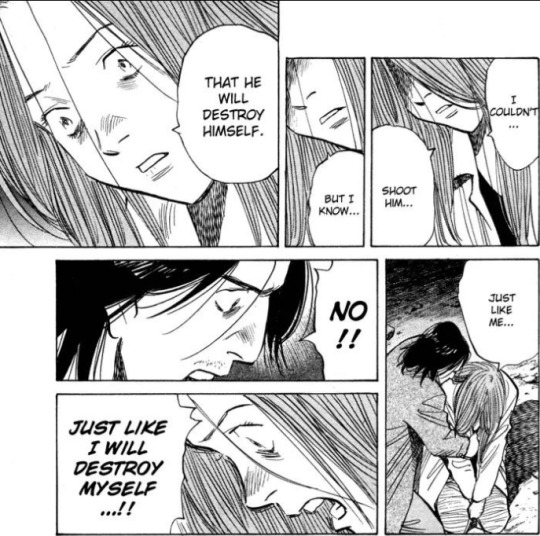
We are never granted access to Johan’s head (except in the last chapter in an ambiguous way), so his feelings and contradictions are often reflected in Nina. It is through her that we can understand where Johan is coming from.
Nina and Johan are parallels and they have parallel journeys. They are both looking for their past and when they discover it, their first reaction is to hurt both themselves and others. They do so because the past they discover shatters their already frail self-images.
Nina is supposed to be the innocent victim. She is supposed to have been untouched by her past. She is supposed to have been protected by trauma, just like she was not in Kinderheim.
Johan is instead supposed to be the tragic demon molded by unspeakable pain and abuse. He is supposed to be the one, who went through the worse trauma.
Still, it turns out that Nina is the one brought to the Red Roses Mansion. She negated her past and Johan made it his. He has been symbolically harboring all the negative feelings Nina should have felt. He has expressed her hurt and her violence in her place (again symbolically speaking). This is why Johan is Nina’s shadow.
Nina refuses all her negative memories and represses her negative feelings. Still, she needs to accept them if she wants to grow and to heal. After all, at the end of all those horrible memories there is this:


One single good memory. A good memory masked as an ominous one is able to solve Nina’s arc. Nina looks for who she is only to realize in the end she can be whoever she chooses to. She does not need to be a prisoner of her past. Still, she had to aknowledge it to properly understand it.
Still, her first reaction when discovering the truth is to attempt her own perfect suicide:
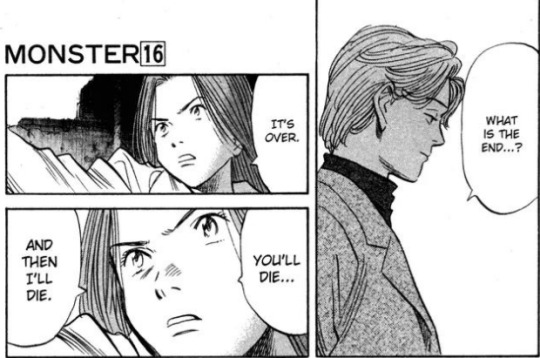
Nina wants to kill her brother and then herself. She wants to kill her past and herself with it. This is just another version of The God of Peace. It is just The Nameless Monster of the East that kills the Nameless Monster of the West.
As a matter of fact the twins take inspiration for their perfect suicides from the picture books Bonaparta wrote. They are still very much influenced by him.
Luckily, Nina’s attempts fails:
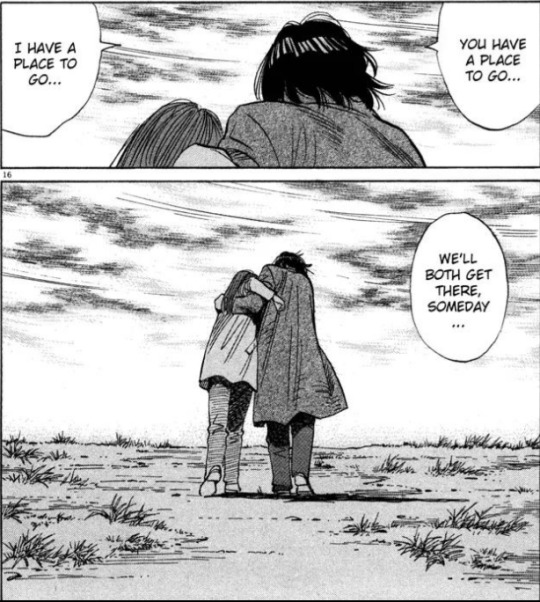
This picture is powerful because it resembles the scene where Nina and Johan walk together to reach the border. At the same time, it evokes The Vision of the Doomsday. Nina and Tenma are both walking walking through The Land of the Nameless. Still, they manage to keep moving and are able to make it out.
By saving themselves they are also able to save Johan. As I have written in my first meta, ultimately Johan’s perfect suicide fails because he, differently from the Nameless Monster of the book, never kills Nina and Tenma aka the only two people who truly know him. It is because in the end both Nina and Tenma are able to understand him that Johan is saved. He can’t be no-one because there are two people who know who he is.
Finally, if you were to ask where does Johan’s nihilism come from, the answer is in the last chapter aka The Real Monster. The title can be read in different ways. You can choose to read it as the mother being the real monster or as it meaning the truth behind the monster. I choose the second one.
Whatever you choose, the point is that Johan’s nihilism is born by the doubt he is not wanted. It is a feeling born by someone whose sense of identity is so frail that he is scared his mother might not have even recognized him when she sacrificed his sister for him. Did she mean him? Or did she make a mistake? Who is him without his sister anyway? If his mother can sacrifice his sister will she sacrifice him too?
I hope this answer helped.
Thank you for the ask!
#naoki urasawa's monster#johan liebert#nina fortner#naoki urasawa's monster meta#monster meta#asksfullofsugar#anonymous#my meta
124 notes
·
View notes
Text
SO.... HEROINE'S JOURNEY. YA?
There are a few approaches to the Heroine's Journey and they're all a little wonky as fuck.
is to look at old myths about Heroines and find patterns in them, the way Campbell found patterns in Hero myths. Problem here is that there's much less narrative consistency in those, and they're generally a little less common, and so there's not as much of a pattern to distill into a neat little diagram.
is to craft a psychological model for little girls coming of age, akin to the one the Hero's Journey provides for little boys, and work off that. This is nice, but tends to lack the weight and kind of viral catchiness of the mythologically derived formula
is just to genderswap the Hero's Journey, or to put a Heroine through the Hero's Journey as is. These most often fall apart on account of having zero critical assessment of what the plot being acted out is or how it functions. No one learns jack squat, no one grows, and as a shitty cherry on top the plot just looks derivative. (Looking right at you, Force Awakens.)
The old mythic approach is generally ignored for being far too loose. It also tends to revolve around awkward at times sexist narratives of purity and purification as a process, the role of healing, mending and forgiving flawed and often outright antagonistic individuals, preservation and protection of the home, and consequently a lack of real adventure. It very often ends in an ascension to goddess-hood by way of or for the ends of some kind of self sacrifice. I'm not super keen on this for a number of reasons, not the least of which being the narrative trend in which a woman's role is give herself up for the good of others... But worth pointing out here is that the myths that can be referenced that don't fit these themes are so wildly different both from the proposed core formula and even one another that they don't outline a new or alternative trend at all. Women that kick ass in myth absolutely exist, but they tend to be unique rather than formulaic, be that for better or for worse...
Funny enough Zelda: Skyward Sword utilized this in a fascinating way. As Link goes through a very conventional Hero's Journey, really beat for beat, in his pursuit of the missing Princess Zelda he continually gets to the end of a dungeon to find that Zelda was just there, but he missed her and she's moved on. And in fact each time this happens we learn that Zelda had her own reasons for visiting all these temples and sure enough this background plot that Zelda has been acting out is the mythic Heroine's Journey.
Seeing the two acted out in tandem, and showing how the two actually facilitate and serve one another in a bigger picture is actually a really brilliant way to tell these old stories. Zelda's quest has added urgency because we know that as she progresses, the encroaching evil is only barely being beaten back by Link. and Link's Hero's Journey is given new importance because his Meeting with the Goddess isn't just about shipping him with Zelda, it's about saving Zelda from the consequences of her self sacrifice.
The distantly Jungian derived model is actually only as old as 1990 and came about as a centerpiece in a women's self-help book. Maureen Murdock suggests this process:
Shift from feminine to masculine
Identification with the masculine
Road of trials
Experiencing the illusory boon of success
The descent/meeting with the goddess
Yearning for the reconnect
Reconciliation with the masculine
The union
In which the girl has to adopt masculine agency in order to act upon the world in the way man are expected to and girls are not. She adventures with these masculine skills/features at hand. She feels fulfilled by these conquests, but then must face the idea that masculine conquest is not a valid or meaningful kind of accomplishment. She has a conflict of self, dives deep into the self to meet with her own feminine side, now long repressed. She learns to want to be a woman. She confronts the flaws of the masculine pursuit she's been on. She learns to embrace both gendered identities and is at peace.
This thing has so many little bumps and hiccups and things to get caught up on. I'm really not fond of it. It's a product of its time and its writers' predecessors' biases and already kind of misaligned premises. (Btw this is a huge contributing factor to the plot of Revolutionary Girl Utena.)
The second version is generally exemplified in the Heroine's Journey formulated by Victoria Lynn Schmidt. I'll be totally honest, I'm not as familiar with that one. But it was written to more directly mirror Campbell's Hero's Journey in its cyclical nature and use as a writing template (where as Murdock's was decidedly less focused on story telling applications) and it's major pitfall is that it really doesn't seem to have any kind of "universal" mythic origin, and so kind of lacks the punch Campbell's implication of myth speaking to the innate human psyche in the universal familiarity of its trends.
Illusion of the perfect world
Betrayal/disillusionment
The awakening
The descent: passing through the gates of judgment
Eye of the storm
All is lost/death
Support
Rebirth/moment of truth
Return to a new world
Like I said, I'm just less familiar with this one in practice. It doesn't feel like a terrible plot or character arc, and there are aspects of it that I really like, even. But it doesn't really feel like it particularly "fixes" any of the problems at hand with its predecessors.
And the third one, I mentioned is typically just bad and stupid; a creative decision made in pure ignorance. When removed from any psychological context the motions of the plot become meaningless. But a fascinating case of sort of doing it was Disney's Moana. Not because it genderswapped the Campbellian Hero's Journey but because it chose to merge the myth Hero and Heroine's Journey together, and yeah, in which a little genderswapping happened to be involved.
Moana's role is to "stay" and be mother to her people, to protect and preserve, to purify and heal and forgive... BUT in a beautifully deft twist she discovered that preserving her people's way of life means heeding the call to adventure/call of the sea, means venturing into the unknown to learn new things and conquer trials... it means meeting with The God, Maui (instead of the Goddess) means confronting The Mother (Instead of the father) but instead of defeating her like a Hero, healing her like a Heroine. It really beautifully juggles the two cycles in a way that doesn't give either one supremacy over the other, in the truest Reconciliation/Union of proposed masculine and feminine. (Yes, the Te Ka/Te Fiti reveal was 100% a textbook Vader moment.)
But of course the big pitfall this, and the original Hero's Journey fall into is the assumption of some kind of deeply essential gendered aspect of psychology, and not separating elements of biological impulse as they relate to psychology from the heavy HEAVY filter of socialization. On the one hand, I still believe the Hero's Journey, and some variations of the Heroine's Journey(s) can absolutely be utilized in writing in a deeply meaningful and largely accurate and affecting way. But I'm also very much in favor of seeking out alternatives to these in ways that pursue more of that universal appeal that Campbell thought he'd tapped into. But that is yet another rant entirely...
16 notes
·
View notes
Note
Why does Dean plead guilty? Is it bc of Phoebe? Is it because he wants to protect Beth? Is it because he wants to take the credit? Does it have to do with his male-ness? Have you already explored this topic? #questions
That’s such a good question, anon! It makes for a really interesting (and I actually think in-character) beat for Dean, and I think you’re right in the sense that it’s partially about protecting Beth and partially having to do with his male-ness, but I think there’s also something more fundamental at play.
I’ve been thinking a lot lately about how this show explores image, perception and projection, and how frequently those things are at the root of Beth and Dean’s arcs, both together and apart. These themes do of course feed into other character storylines (Annie at Ben’s school charity auction in 4.02 being one of the clearest examples of this – that was entirely about projecting an image to Ben’s peers and trying to change the way she would be perceived), but I don’t think it roots as deeply as it does in Beth and Dean, in no small part because Beth and Dean’s biggest audience is themselves.
So! Let’s break that down and talk about how that feeds into Dean pleading guilty.
Rose Coloured Boy (Rose Coloured Girl): nostalgia as the face of love
One of the things that’s always fascinating to me about Beth and Dean’s relationship is how often the show roots it in the past. One of the very first moments of Dean acting regretful over his cheating way back in 1.02 is through talking about the ‘fun stuff [he and Beth] did in the back seat in highschool’. That sense of the history of their romance is further emphasised in imagery of their past – Beth and Dean’s wedding photo is revisited frequently in season 1 while their anniversary is a key moment of the finale, Dean reminisces over screenshots of the kids as babies in season 2, and they even talk sweetly about anniversary dates, and their first apartment together after signing their divorce papers in 2.13.
This paints a picture of a tender history. One of young love and years of happiness and kindness, only it’s a history that the show has regularly, deliberately undermined.
All those beautiful pictures Dean’s looking at of his young family together and happy? Well, 2.05 confirmed that Beth was pregnant while he was having one of his affairs, so which of those photos are truly happy, and which were taken while Dean was betraying her? Similarly, they talk and joke about Valentine’s Day three years ago at the end of 3.08, but if he wasn’t having an affair with Amber then, he was likely having one with another woman.
The purpose of undermining history like this isn’t about the show forgetting or retconning these plot points – especially when the show ties these moments to other emotions, like Dean’s jealousy over Rio in 3.08 (and I’ll come back to that later), or Dean’s feelings of failure – but rather to establish the way that Beth and Dean both romanticise their past and paint it with a rose-coloured brush.
They tell themselves that they might not be happy today, but they were happy yesterday. And then they say that the next day and the next day and the next day, until every unhappy day, becomes a happy yesterday.
That romanticisation of their history is intrinsically tied to an image that they want to project to themselves. They have put so much time and energy into this thing between them, they have so many children, have so much of their lives entwined, that they need to believe that it’s all been worth it, because if it’s not, the image cracks and I don’t think either of them have the tools to handle that.
Which we kind of saw in 4.03.
It’s not an accident that the Beth and Dean flashbacks were in that episode – an episode that in a lot of ways fractured the image of Beth and Dean’s relationship, particularly for Dean. He’s been under the impression that they’re better, that they’re working again, that neither of them are cheating and Rio’s far away and Beth believes in him like she did before everything went wrong, and to discover that that image was false – was a projection of what Beth wanted him to believe, and perhaps simply what he himself wanted to believe too – is challenging to say the very least.
He was put in a position where he was faced not only with the extreme consequences of his wife’s actions, but a domino effect of lie after lie after lie, and the show choosing to take us back to the start of their relationship at that very moment, I think, shows us that the root of Beth and Dean’s relationship came back to Beth needing to be looked after, and Dean deciding, without knowing Beth very well, that he wanted to be the one to do it.
Macho Macho Man: Dean & Masculinity
Which brings us to Dean and masculinity. I’ve talked about the show’s exploration of masculinity quite a bit now (hell, it even has its own tag now, haha), and wrote a whole series of posts after 2.04 about male ego which I should probably update sometime to include s3 and s4, but it really is one of the core themes of the show. It bubbles to the surface almost constantly and frequently becomes a driving factor of character motivations, particularly characters like Turner, who had his male ego challenged by Beth which resulted in a vendetta, to Boomer’s toxic masculinity driving him through much of the show.
For Dean though, his masculinity is frequently projected only to be destroyed, undermined or used against him in a way that ultimately completely emasculates him. The scene of Dean trying to reassert gender roles on himself and Beth only to have Rio bone his wife, destroy his prized car and insert himself into his business is perhaps the clearest example of that, but it manifests in plenty of other ways too. From hiring hitmen only to be robbed and have his wife’s panties stuck in his mouth, to buying the gun only to have it stolen, to think he’s establishing a new business for himself only to discover his wife’s pulling the strings with her ex-lover. Hell, even the fact of losing the business in the first place is inherently emasculating.
What I’m getting at is that every time Dean asserts himself in ways that are typically considered ‘Masculine’ – providing for his family, dominating his wife / treating her paternalistically, behaving with violent intents, establishing a business – it’s only to have that immediately undermined in the narrative. Dean likes this image for himself, and wants to project it, but the show keeps telling us that the image is a false one.
And then the show outright used that falsehood, and Dean’s insecurity over it, in 4.02 with Dave convincing Dean to give him the books, despite Beth telling him they weren’t ready.
Dean played right into his hand because Dave saw Dean’s masculinity for what it was – a projection covering an insecurity, which in turn, made Dean act thoughtlessly.
(Another pattern of behaviour for Dean! Like hiring the hitmen or cutting the money plate).
Dean’s commitment to the image of masculinity is in a lot of ways too tied to this idea of the rose-coloured image of his and Beth’s romantic history. Beth, from an image standpoint, is a case study in traditional femininity, and for much of their 20-year relationship, they’ve had their roles and they’ve stuck to them. The challenge of that throughout the course of the series is ultimately a challenge to the image that their relationship is based on, which in turn means that Dean’s feelings of failing masculinity end up being tied to his feelings and insecurities around Beth, frequently manifesting into jealousy over Rio.
To have that used against him by Dave (and funnily enough, Rio using those same feelings of Dean’s against Beth in 4.02) is a really interesting character note and I think very much fuels his motivation in the scene with Phoebe.
That Loving Feeling: a brief aside
I feel like I’d be remiss if I didn’t mention here that I actually do think Beth and Dean love each other. I think that it’s a broken love, like Christina said in her BUILD interview while promoting season 3, and I also think it’s a child’s love, which is something that we saw a bit through these flashbacks. Their relationship is so steeped in that history and that origin, that their love has failed to grow with them. It’s a sort of arrested development type of love, which I think makes them cling to the image all the harder, and it’s that old love and that image that’s stopped Dean from ever even contemplating turning Beth in.
Dean Pleads Guilty
Projection and perception are key in this show overall, but especially this season. We’ve seen that with the way Fitzpatrick has projected onto Beth, which I’ll talk about another time, but we also importantly saw Phoebe project onto Beth in this episode. She equates Beth to a girl she was friends with in highschool who used her, and tells Dean as such.
Phoebe’s projection of Beth – her image of her – isn’t one that Dean identifies with, and he tells her as much in return. While Dean is quiet in the scene overall outside of that interaction, the flashbacks deliberately seek to remind us of the nostalgia that has driven Beth and Dean’s relationship for the last twenty years and four seasons of the show. There’s a part of Dean that still sees Beth as the girl he chose to look after when they were just teenagers, and I think having his masculinity threatened the episode before by Dave intermingled with Dean’s nostalgia and his desire to ‘man up’ and take care of her in the way he tried to when her mum was in the hospital. All their murky, messy history and anger and hurt is painted over again, and Dean, at least in the moment, re-commits himself to the image of what he and Beth are.
He’s the man, she’s the woman, and it’s just another unhappy today for all those happy yesterdays.
#beth x dean#beth boland#dean boland#gg 4.03#masculinity#character backgrounds#staying's worse than leaving#welcome to my ama#Anonymous
27 notes
·
View notes
Note
hi! a song inside the halls of the dark is an absolute masterpiece of plotting and pacing (and prob my fave fic I’ve read for the show so far), so for the ask a writer meme, I’d love to hear about your planning process(es). the idea of even plotting out something like that, let alone actually finishing it, just breaks my brain lol. do you do a lot of outlining? how much does the outcome end up looking like the ideas that sparked it?
adsfghgsj okay well first off, thank you! that is unspeakably flattering and i don’t know how to cope! my weird robot emotions are misfiring! but also, thank you for this question bc this is the kind of nerd shit i LIVE FOR and up until, idk, 5? 6? months ago my answer would’ve more or less been ¯\_(ツ)_/¯ but sometime in between now and then i leveled up how much of a nerd i am.
okay so, the short answer to your (first) question is yes, i do a lot of outlining though the scale of outline varies based on the complexity of the story. in song’s case, how i outline actually evolved significantly over the course of writing it (see that level up) and if i were to outline it today, it would look very different from what i originally started with.
the short answer to your second question is in song’s case, the original idea was a v short, almost fluffy stuck in a hotel room for a night one shot i daydreamed up while listening to a halsey song (is there somewhere, if you were wondering). obvs what it turned into was uh, v different.
digging into how i outline is going to get long, excessively nerdy and borderline terrifying so i’m hiding the rest of this under the cut, read at your own risk.
I preface everything here with a couple of reminders:
1. i am a crazy person who straight up does not know how to have hobbies like a normal person
2. i am actively trying to push myself and grow as a writer including developing new skills and training myself to practice certain habits bc at some point I would like to push myself out of the nest and try my hand at original fiction one day with a vague goal of maybe seeing if i could get it published. idk if i’ll ever actually do that BUT in the meantime, i do stuff like the nightmare that follows to myself
initial outline / what happens next list
okay so the most basic of my outlines (and how i originally outlined song) are p much just lists of what happens next. i do them as bullet lists bc my brain finds them less intimidating and i just start with one and then ask myself what happens next. sometimes the bullets are v vague, sometimes they get so specific i end up writing what becomes dialogue, i try not to think too hard about it, i just keep asking what happens next.
it’s really specifically about what happens next, not asking myself what i want to happen in the story, bc next implies the bullet before informs the one after, so you end up with an overall picture of what you want with a base level of causality built in. it also gives you room to surprise yourself (i think literally every what happens next outline i’ve done has had me going oh, okaaaaaay at some point).
sometimes, this is all you need. for trade my heart for honey, i started and stopped here bc at the end of the day, the skeleton for that fic is super basic: beth and rio attempt to play pool without tripping over their horrendous sexual tension. they fail. the end.
for your monster looks like mine, i did a version of the what happens next list, but i brought in some of my tricks from the pace structuring method i’ve been honing for the multi-chapter i’m currently planning. instead of mapping tentpole beats by story pace, i mapped tentpole beats for what points i wanted beth and rio to be scoring against each other and then mapped out the lead-up and fallout to connect the two and also what they were doing to each other physically at the same time so i could see how it all played together so the conversation supported the smut and vice versa. it was a TOTALLY normal approach to writing pwp. not over the top at all.
song’s original outline was basically a SUPER long what happens next list and if i could go back in time i would slap myself upside the head like bitch you have no idea what you’re getting into and you are WAY TOO COCKY ABOUT IT, but it’s okay i learned.
the spreadsheet method
somewhere around when i was in the middle of i want to say ch 9 of song, @pynkhues posted about her outlining process including a super awesome spreadsheet she uses (i cannot for the life of me find the original post, forgive me but know that it was hers) and i immediately jacked a version of it to use as my own and oh my god it changed my whole life.
iirc hers was a bit more in depth but since i was sort of baby-stepping into it, i stripped it down into the following and did a sheet for each of the remaining chapters (well, ch 10 and ch 11, ch 11 ended up getting wildly out of control so i split it in two and mushed the epilogue i’d been planning onto the end of it as a closing breakout scene:
plot

character

it’s a lot of repetition, tbh BUT once i started using it, i found the repetition was incredibly clarifying and by making myself take the time to go through each column and go through the same stuff over and over, it honed in on the strongest, most relevant bits of what i was planning and helped me see patterns and connections i maybe hadn’t been thinking of on the onset.
when i outlined swear i used this method and added a layer to my chapter overviews where i track the lies and corresponding truths worked into the chapter narratives (bc that’s a key theme of the story), and color-coded the beats that corresponded to the main plot vs individual character arcs vs foreshadowing so i’d have an at a glance visual reference to make sure nothing was getting lost and all of the characters (even minor ones) had stuff happening to them and didn’t just feel like cardboard cutouts coming in and out of the story as i needed them
pace structuring
these are all fine and dandy but one thing they’re missing is pacing! for song’s pacing, i will be real with you, i v much went a lot with my gut. i’ve spent most of my life consuming and paying a lot of attention to stories. i’m fascinated with how they come together and literally cannot shut off the part of my brain that likes to pick them apart to examine the pieces to see how they all fit together. as such, it’s left me with a p instinctive grasp for how a story should feel when it’s working which is fantastic when it is, but really useless when it isn’t bc i struggle to identify where and why sometimes so i can fix it.
for the buffyverse, once i started to realize (with no small amount of horror) the scope of what i wanted to write, i realized p quick i needed some kind of tool kit to help me figure out the arc and pacing bc this was going to be a lot closer to trying to plot a whole novel from the ground up (which is great bc one of the things i want to practice is pacing and plotting out novels from the ground up, hahaha)
i’ve been working with a two main docs (and neither of them are spreadsheets, yet, bc one thing the spreadsheet method taught me it’s that while i find them very soothing, my brain works in bullet lists so i’m starting with bullets and then i’m gonna strain it through a spreadsheet):
1. Thoughts:
just a doc where I word vomit out anything I’m thinking, I don’t worry about keeping it organized, I just throw whatever I’m thinking in there so it’s memorialized and I can sort through it later.
2. Act Timelines / Scene Breakdowns:
basically, i have a basic three-act story structure with tentpole story beats broken out by general ballpark percentages of how far into the story/act they should occur for the pacing to feel right. i use that as the framework i run my plot and character beats through and do it in a couple of passes:
high level: i go through and break out what’s happening in the story for each tentpole beat (what the specific story and plot focus is)
by character: i go through and fill in (at least) one sub-bullet beneath each plot tentpole beat with what’s happening with each main character in their individual subplot, how they got there, what their general feelings and mindset is, if they’re having any revelations, etc (one thing i fucked up with song is not making sure i had stuff going on for all of the characters, the plot was super focused on beth and while i generally knew what rio was doing and why, ruby and annie more or less floated in and out of the story at whim and i hate that, so i’m trying to be better about it going forward)
by relationship: now i go in and fill in a layer of bullllets with how the plot and character beats are shaping relationships and how they’re progressing through each tentpole beat
at this point i’ve got a pretty fleshed out outline hitting on plot, character and relationship development at least in broad, general terms. i can look at it like a map and see how characters are growing and changing throughout the story and look for areas where the plot is pushing the characters vs the other way around and places where it seems weak or poorly connected/supported and i tinker with that for awhile until i feel like it’s in good shape.
next step is applying the what happens next approach to the scene by scene breakdowns. i’m trying an experiment with this one where instead of breaking the fic into chapters first, i’m breaking it into scenes and working out the beats of them so they incorporate all of my outlined stuff and then i’m gonna go back and see where the chapter breaks look like they fall.
I’m like, 75% of the way through my scene breakdown for this particular fic and once I’m done with that, I’m going to take everything and plug it into the spreadsheet I worked with for the last couple of chapters of song and highlight/color code like I did for swear to make sure my chapter breakdowns align with everything I’m trying to do and I’m tracking all of my themes and details and setting things up to pay them off later.
so, you know, an absolutely normal amount of planning for a hobby i do entirely for funsies in my largely nonexistent spare time.
(sorry this was i am assuming WAAY MORE INFORMATION than you ever wanted or needed to know but once i started i couldn’t stop)
(and seriously, thank you, am truly verklempt that you love song like that 💖)
bts fic writing q’s IF YOU DARE hahaha
#welcome to my brain#every time i show people this they either freak out#or expose themselves as giant nerds#which i love bc i too am clearly a giant nerd#idk how to tag this#how i write#meg's mental nightmare menagerie#fic writing q's#ask me stuff#lindybot#shut up meg
11 notes
·
View notes
Text
Why I don’t give a fuck about canon

Recently, after randomly coming across some dope pictures of Transformer toys on Instagram that gave me a strong case of nostalgia, I was inspired to revisit an old childhood favorite in “Beast Wars.”
“Beast Wars,” in case you never watched or heard of it as a kid, is the continuation of the Transformer’s story set in the future as descendants of the Auotobots and Decepticons, the Maximals and Predacons, respectively, accidentally travel to prehistoric Earth to continue a centuries long battle between the two opposing factions.
There’s a lot of to digest there, so I’m not going to go into extreme detail over the plot, but the cast features colorful characters such as Optimus Primal, Cheetor, Rattrap, Dinobot and Megatron to name a few. They all have interesting and distinct personalities and generally play well off each other. It was a big part of my childhood and I collected an ungodly amount of their toys back in the day.
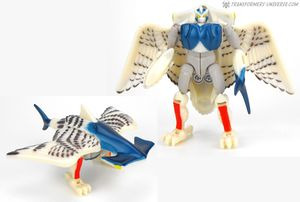
(This was my first ever Beast Wars toy and I think it’s beautiful.)
My rewatch though was…a mixed bag to say the least. The graphics have not aged well. The adventure of the week setup of the plot was repetitive and lacked real character development at times. There were characters that were added in last minute to the show clearly to promote a new action figure over the story on numerous occasions. Though I found the humor to still be pretty good, the action was stale and just lacked high stakes most of the time, save for a few episodes.
I was not shocked it didn’t land terribly well on my rewatch but you know what did? “Beast Machines!”

“Beast Machines” was the follow-up to Beast Wars that had the Maximals fighting on Cybertron where Megatron has taken control of the whole planet using a virus that changes Transformers into mindless drones to do his bidding. The remaining Maximals manage to survive however after Optimus discovers The Oracle which reformats them into animal robot hybrids that are both mechanical and biological. This sets them on a quest to stop Megatron and bring biological and mechanical balance to Cybertron once and for all.
The series is much more narrative based than the previous as it follows a steady trajectory to its epic conclusion. The animation is much sharper, and the soundtrack is fun as hell to listen to still. The pacing is much faster as the stakes couldn’t be higher for the Maximals and all the old characters from the previous grow in interesting ways and develop into more organic people (literally in some ways). Optimus is a more hardcore and emotionally damaged leader and Megatron goes from being something of a punchline in the previous series to a far more menacing and calculating nemesis. The story touches on themes of balance, authoritarianism, PTSD, love and reunion to name a few and for a kids’ show it is, dare I say…more than meets the eye.
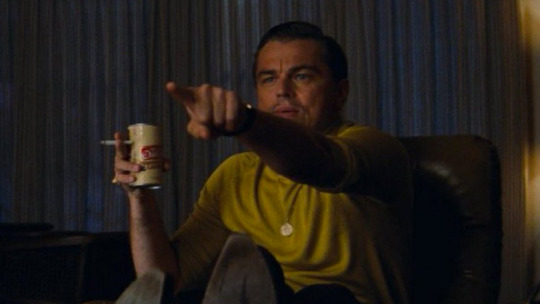
I absolutely loved it as a kid and I might actually love it even more as an adult, so it was shocking for me, to say the least, when I read further into the history of the show, that a lot of fans straight up rejected it back in the day.
Common complaints I came across were they didn’t like how characters, such as Ratrap especially, “changed.” They didn’t like the new bio/mechanical Maximals and couldn’t believe that Cybertron was once an organic world.
Their big reason (in just about every forum and video I saw about it)? It didn’t adhere to “canon.”
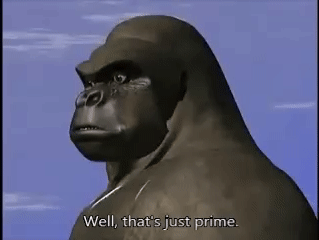
Now, I’ll start this by saying there is no objective way to critique or even not critique a story. People can like or hate something for a variety of reasons that don’t follow a strict logical pattern. Gods know I have a few questionable/divisive favorites in my catalogue that I have written about here that are based on abstract ideas and personal experiences.

(The Matrix Reloaded is still great btw)
But I will say, if you judge a mega franchise’s latest entry on how well it is supported by established canon it is, in my opinion, a flawed way to critique a work of fiction.
Canon, sometimes referred to as “lore” by fans, is most often applied and used to describe the long running back stories of franchises that stretch beyond just the main books, movies or series, or even the original narrative of the plot. Star Wars, Star Trek, Lord of the Rings, and to a certain extent Harry Potter, all fall into this camp of series with so many interconnected parts, with more than one main character featured in each, that fans follow along this canon like ancient monks studying scripture and history books.
And they can be just as fanatical and over zealous about it.
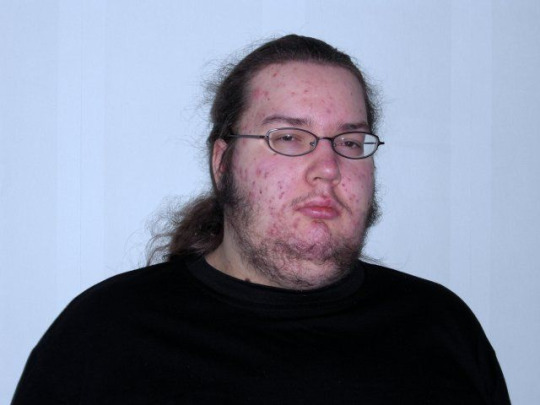
(I wish they were more fanatical about proper hygiene or at least deodorant...)
My problem with the ways fans often view canon is that their conceptions of what a new story should be is based entirely on the past rather than what is happening right now with the story and what themes the writer is trying express with it this time.
They base their impressions of the story on external continuity more than the internal continuity.
Yea, the changes in a series like “Beast Machines” are jarring to say the least. Cybertron was formally an organic world like Earth? Rattrap doesn’t have confidence in himself and actually at one point sells out his comrades? Transformers can be biological now? It’s a lot to take in but when watching the story play out it’s not like these elements aren’t explained through the text of the new story.
Cybertron lost balance between its robot inhabitants and its biological life forms and its why it’s out of balance now, and Megatron is the logical progression of that inbalance. Rattrap is struggling to understand his new form, half his friends on the Maximals have been turned into drones, and the remaining team out loud say they don’t have confidence in him. He has PTSD from both the events of this story and the Beast Wars and feels insecure because of how others view him and that’s perfectly logical to not just the story but also the canon. If a fan is willing to give a story a chance they will see that the canon hasn’t actually been destroyed in much of any way and the logical progression is actually there if they simply listen to what’s going on.

(Seriously, it’s not that deep.)
Fans need to stop confusing a character achieving a franchise long arc with being “suddenly different.” In this way, criticisms of canon in new entries in long running series reveal that fans really just lack imagination to connect the dots. It would be like complaining that Luke Skywalker can’t become paranoid and make a grave mistake in judgment because people never change, nevermind the character already has changed a lot from his origins in “A New Hope” to where he was in “Return of the Jedi.”

(Oh wait, people did do that…)
But that’s not to say you have to like the new direction either. You can understand these changes and still be like “well, it’s not for me. I don’t care for a PSTD angle or a new origin for Cybertron,” but that’s whole lot different than saying the new series “rapes your childhood” or “Bastardizes the canon.” All the old canon you hold nostalgia for still exists. My love for “Beast Machines” is not harmed by the existence of newer Transformers properties that don’t meet what I look for in the series.
Too often, fans take changes to established “lore” very personally because it doesn’t fit their expectations or have the same nostalgic feelings they had before. When new entries in mega franchises occur fans often try to judge it by how much it is like what they watched before, rather what makes it different and what it is saying now. Again, you don’t have to like new directions in tone or character but consistency to established work DOES NOT equal good storytelling.
I have not been immune to this myself in the past, of course. Back in the day I wrote a 2500-plus word diatribe on “The Amazing Spider-man 2” that mostly went after how it changed the character I grew up with in a bad way and butchered the established back story I knew him by.
You know what other story doesn’t follow canon very well though? “Spider-man: Homecoming.”
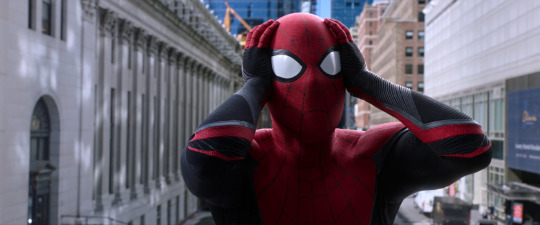
(Now, hear me out...)
Spider-man in the MCU is generally agreed upon to be a good thing by fans. Both movies were big hits both critically and financially and fans often go as far as to say Tom Holland is the “definitive” Peter Parker.
But Holland’s Spider-man differs quite a bit from the comic-book webslinger. This Spider-man does not have a spidey sense. His best friend is not Harry Osbourne but in fact a retcon of a Mile Morales character. His father figure is Tony Stark, something that never happened in the comics, instead of Uncle Ben, which no matter what way you spin it is arguably his most important relationship in the series.
His character is a reverse of traditional Peter Parker too. Where comics Peter is a reluctant hero, who if anything hates being Spider-man and the burden of his responsibility, “Homecoming” Spider-man actively seeks out responsibility and in many ways enjoys his role as the famous webslinger. In fact, his whole arc is about him earning a spot as an Avenger. He wants to be THE hero and be worthy of it. It’s completely different from what we know of Spider-man.

(He just wants Tony sempai to notice him uWu)
Now I know some fans actually do complain about this Spidey from a “canon” standpoint, but most don’t. So why did this Spider-man get a pass for many but not “The Amazing” one? Quite simply it’s because stories, as cheesy as it sounds, are about feelings and stories like “Homecoming” tell a good story that effectively make those feelings connect with the audience.
We root for this Peter Parker and his journey to becoming an Avenger and successor to Iron Man because the story is told well, the emotions feel earned, and frankly both films are fun and enjoyable.
It’s easy to complain about canon for many nerds because it’s something tangible that they can point to and make a big stink about when they don’t understand why a movie isn’t reaching them. I don’t doubt that many neckbeards genuinely hate a film like “The Last Jedi” (Hell, I’m not a big fan myself) but when those same nerds enjoy something like “The Mandalorian,” a series that has its own loose relationship with canon and establishing new rules in the series, it tells me it’s not about the “lore” to them.

(Easy, fanboys...)
I have come to understand, in my growth as a nerd, that my problems with a lot of movies and TV shows in my favorite series rarely, if ever, have anything to do with the story not meeting some arbitrary guidelines regarding canon. It has more to with the story simply not connecting with me emotionally. The story isn’t drawing me in and keeping me on its narrative path. I’m not feeling the same magic that someone else might feel enjoying it because either a) it doesn’t feel earned to me or b) it just stylistically isn’t for me.
To paraphrase a line from another mega franchise, also owned by Disney, the canon is more like guidelines than actual rules.

(Didn’t expect to see ol’ Barbosa in this write up, did ye?)
It can show you where a story comes from but it isn’t law that you strictly adhere to it. Of course, when writing a new work in a popular series you should consider what came before it but I would like writer’s the freedom to try something new and most importantly fans to be open to it. You don’t have to like it but the idea that new entries in a story MUST remain strict to the canon is bull shit. Not even the original Star Wars trilogy adhered to its own canon perfectly, as clearly the writers were in fact making it up to a certain extent as they were going along.
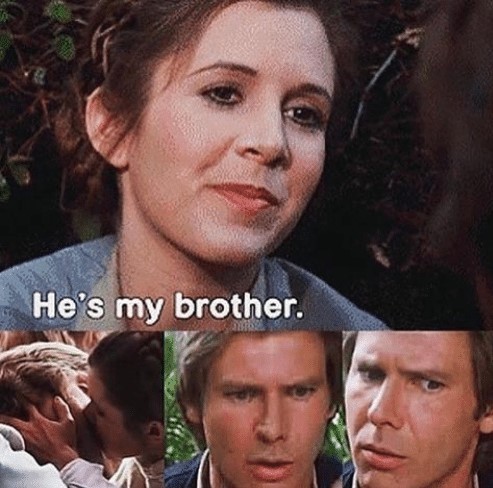
(hmmmm...)
And that’s ok, because some of those changes were great! Made the story better and made the conclusion stronger.
Again, you don’t have to like every new entry that tries something bold or confrontational in your favorite franchise but if writers strictly followed canon to the T we wouldn’t have things like “Homecoming,” we wouldn’t have “The Mandalorian,” and we certainly wouldn’t have my favorite Transformers series “Beast Machines.”
Canon shouldn’t be a trap for writers and it shouldn’t be a litmus test for fans digesting it. There are so many better ways to judge a story than whether or not it fits neatly into established lore. A good story is a good story, regardless of whether or not it’s supported by something as static as canon.
“Beast Machines” has its flaws here and there, but canon isn’t one of them, at least not for me. Again, if you feel that the lore is important, that’s fine, you don’t have to ignore it but I would ask you to look beyond what came before when critiquing a new story.
Otherwise, you might miss something special that comes next…
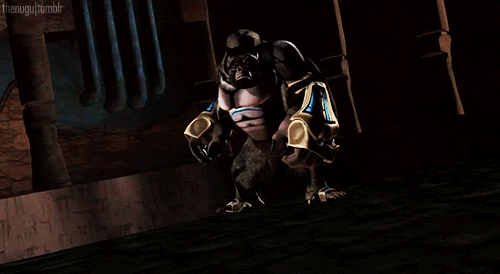
Now then...
#Beast wars#Beast machines#Optimus Prime#Optimus Primal#Transformers#Megatron#Star Wars#Star Trek#Lord of the Rings#Harry Potter#MCU#Marvel#Disney#The Last Jedi#rise of skywalker#Force awakens#Luke Skywalker#Kylo Ren#the mandalorian#The Matrix#The Matrix Reloaded#canon#lore#spider-man#spiderman#the amazing spider-man#spider-man homecoming#Peter Parker#Tom Holland#Andrew Garfield
23 notes
·
View notes
Text
every time I think I’m done talking about the Supernatural finale, I think of something else I want to say...
I’ve seen a lot of people who liked the finale listing reasons they enjoyed it, and those reasons are often centered around the fact that at the end of the day, the brothers only ever needed each other, that they were each other’s heaven... “It’s always been you... and me”, Dean says, just before he dies. And this is viewed as a positive thing to some people. These people celebrate that a show about two brothers who choose each other time and time again, end the show the same way they’ve always been - inseparable even in death.
So let’s. Talk about that. Let’s ignore Castiel, let’s ignore every other character in the whole show, and just talk about the story of Sam and Dean Winchester, in a bubble.
See, I was drawn to the show *specifically* because of the intense relationship between Sam and Dean. Let me tell you, my most re-watched episodes of the whole fifteen season run are the ones that are angsty and visceral and usually involve Sam or Dean wailing in agony over each other’s dead/dying bodies, or displaying obvious suicidal/destructive tendencies when the other one is in trouble/has died. That shit is my JAM. I love the messiness of it, the codependency, the way Sam and Dean will let the world burn to save each other. That’s the good shit, it truly is. I’ve never understood the people who took that to an incestuous place, frankly, but the intensity of the relationship is definitely the single most prominent draw of the whole show for me, and it has been since I started watching it nearly a decade ago.
In season 2, in “Croatoan,” Dean decides to stay with Sam and die with him instead of walking out the door and continuing to live, something he could easily do. In a later episode of that same season, “Born Under a Bad Sign”, Dean says he would “rather die” than kill Sam in order to prevent him from becoming a monster. It’s like... a big ol’ theme of season 2, and one of the reasons why it might be my favorite season of the show. The season ends with Dean giving up his life so Sam can live, but as we see in season 3, Dean is terrified of death and of Hell, and it’s only the thought of Sam dying that makes him stick to his guns.
Flash forward several seasons, to another favorite episode of mine, the MOTW episode “Red Meat” in season eleven, where Dean, believing Sam to be dead, intentionally overdoses and dies to talk to Death and beg for Sam’s life back. So it’s been nine whole seasons, and Dean is still on that codependency streak.
And Sam is not much better, truthfully. Sure, he tries to live on without Dean in the hiatus between seasons 7 & 8, but he immediately abandons his “normal” life once he has Dean back, and that’s a pattern that we see again and again throughout the whole run of the show.
It’s a cycle. It’s a compelling cycle to watch, because it’s so emotionally intense and melodramatic and Jensen and Jared are good performers and their depictions of grief and love for each other are very, very good.
And there are two ways to end a show. One way is to show the cycle continuing, and the other way is to break it. When Dean dies in the finale, he tells Sam not to bring him back, thus breaking the cycle of codependent behavior... which is good, right?
Well, I guess it depends on if you think the show’s themes have set up an ending that is, in every way shape and form, utterly depressing for both of the leads. I’m happy they get to spend eternity in heaven with their friends and family, that’s lovely, but the thing is, the ending of Supernatural doesn’t subvert or challenge or break the cycle the way it might first appear on the surface.
Dean says “I’m just a grunt, I’m just a weapon, I was always meant to die on my feet, hunting” and he says it throughout the whole run of the show. He expects to die young and bloody, and his only wish is that Sam gets to “get out” and live a normal life, free from that pain and fear. He selfishly wants Sam with him, doesn’t know how to live without him, but also wants him to be happy and grow old. In Dean’s mind, the two things are incompatible. In order for Sam to have that happy ending, he has to be out of the picture. See where I’m going yet?
So allll along, Dean’s arc is about sacrificing himself, dying young, as long as Sam gets to live. And Dean’s death wasn’t a noble sacrifice this last time around, it was just a fluke thing, which, as I’ve discussed elsewhere, doesn’t actually bother me on the face of it. What bothers me is that narratively, the suggestion is that once again, Dean’s only possible destiny is to die and get out of the way for Sam to have his destiny, an ordinary life free from hunting that Dean always wanted for him.
But why are these two things mutually exclusive? Why does Dean have to die in order for Sam to get that happiness? When the show started, Dean was destined to die on a hunt, trying to protect his brother or make his father proud... and Sam was destined to a life of suburban bliss. And then fifteen years later, that’s where they ended up, despite all of the growth that happens in between.
I’m not mad that the show ended with Sam and Dean in Heaven, I think that’s lovely as an epilogue. I’m mad that the show decided that what Dean always said about himself, the thing I thought the narrative was working to overcome... ended up being true. In the end, Dean didn’t have any wants or dreams or hopes or desires outside of his brother Sam. And that makes for compelling, twisted television as a starting point on a character’s journey, but what it does not make for is a compelling arc.
Dean’s character growth was erased in the finale. It wasn’t erased because he didn’t get to kiss an angel or because we didn’t get to see other fan favorites return. It was erased because the narrative implication of that ending is that Dean never got free of the mindset that told him that Sam’s happiness and freedom were contingent on him dying young.
Dean has been talking for literal years about how he expects to die young, and has displayed more than just suicidal tendencies throughout the many seasons of the show... and then in the end, he was right, I guess. He did die young. He never got a chance to enjoy his free will, he gave up instantly when he realized he was badly hurt. A traumatized man who struggled with depression for years ended up dead in his early 40′s. But it’s okay, because all he cared about was Sam, I guess, and Sam... being slightly less suicidally dependent on his brother, is able to limp through what looks to be a fairly depressing life, waiting for the moment he can finally die and be reunited with his brother? Dude, I’m thinking Sam might have been happier if Dean had gotten to grow old, too. Just. Spit-balling here.
People who liked the finale... I don’t get how you can celebrate that outcome for Dean. I don’t get how it doesn’t make you really, really sad. What, at the end of the day, does Dean dying young actually add to the narrative and the storytelling beats of this finale? Are we meant to believe that Sam couldn’t have found peace unless Dean wasn’t around? What happens if Dean lives to be 80, and then dies, and meets Bobby up in Heaven as a younger version of himself? Why is that not an acceptable ending? What does the show gain by not giving him that happiness on earth?
14 notes
·
View notes
Text
Writeblr: Introducting Your WIP
For the anon who asked, here is one way you could introduce your WIP in a way that is concise, clear, and captivating for all of the writeblr community to see and admire. I will talk about how I introduced my WIP and I included an example of how a show I really like introduces/summarizes itself.
Disclaimer: I am not a published or super experienced writer or marketing expert, but this is what I have observed from a writeblr standpoint, reader standpoint, and academic standpoint. If you happened to be an expert at any of those, feel free to point out if I’ve said something stupid!
1. Take a step back
I’m guessing if you want to introduce your WIP to the world, that means you like it, right? You’ve no doubt spent countless hours working on it and you have all these details about plot and characters and setting and worldbuilding. For a summary and introduction, throw all of that out of the window. It is important as a writer that you know all that, but for an audience picking up your book or reading about your WIP the first time, they need only a little bit of information: what, who, where, and why should I care.
2. What
Titles are hard. You could have the best plot in the world with the best characters but if your title isn’t at least a little interesting or stark or eye catching, your success may be limited. I’m not saying the title is the most important thing ever, but no matter how much we say ‘Don’t judge a book by its cover’ we do exactly that! The cover and title of a book are usually the first thing people see, the title on tumblr and any associated picture(s) you have will be the first thing people see too. So try and think of a catchy title. It doesn’t have to be perfect, you are allowed to change it (it is called a Work In Progress after all) but in introducing it, people are going to read it and make a judgement about whether to keep reading or move on.
Also consider adding a moodboard or edit or some kind of picture. People are drawn to color and images and are more likely to stop and look at your post. A moodboard can also convey the aesthetic or themes in your WIP, which will attract an audience looking for WIPs like that.
3. Who and Where
So you probably have a main character or a few. Just like meeting someone in real life, your reader will only take a few seconds to consider who this character is to see if they care or not. In a lot of book summaries they usually include a name and what makes the character different from your average Joe/Jane. Its the reason they are the main character and deserve so much attention, t should be the reason they are special so that the reader will read it and say, “What does that mean? I’ll have to keep reading.”
The way you do this can also tell the reader more about the genre and setting of your story. In my post, “Cassia was just an apothecary and healer...” says so much already about her and my world. I can tell you that I know of no apothecaries in the 21st Century and no one says healer when we have doctors. It lets the reader know that this is either set in the past or it is fantasy. The last bit of the line ”...for the Heidyll court when the King got sick.” introduces the physical setting. Heidyll is not a real place, believe me I checked before I used the name, and there aren’t too many popular kings in the world today. The combination of my summary and then my moodboard has let the reader know this is a high fantasy WIP, who my character is, and where this takes place.
4. Why should I care?
So you have your title, you have your character, and you’ve let the reader know a bit about your genre or setting, now you have to get them committed to the plot. I think a general rule is to not divulge more information about the plot than what is in your first few chaptes. Looking at your story or narrative arc, you shouldn’t tell the reader anything past the inciting incident.
This should make sense, your inciting incident is the thing that gets your character away from what they have been doing before the story started and starts them on the journey where most of your plot takes place, and in your summary it is the hook that drags the reader along with them. In my summary, I told the reader who Cassia is, why she is special (being accused of being a witch and then becoming one), and then I threw out my hook (the new king is sick and it’s up to her to save him otherwise she’s gonne be killed). Hopefully at that point the person reading my summary cares enough about Cassia and the story that they will keep reading when its done, or on tumblr like it and want to keep up with my progress.
I think those are the key elements to a good summary. Think about a lot of popular shows/books and their summaries- most of them follow this kind of pattern of what to include.
For example:
I really like how Avatar the Last Airbender introduces and summarizes the show:
“Water, Earth, Fire, Air. Long ago the Four Nations lived in harmony,” Right off the the bat with the animation tells you this is a fantasy world with bending and the world is split accordingly.
“Then everything changed when the Fire Nation attacked. Only the Avatar, Master of all four elements could stop them, but when the world needed him most he vanished.” Important background information that is necessary to draw the the watcher in, it introduces conflict and then introduces the main character, this ‘Avatar’
“100 years past and my brother and I discovered a new Avatar, an airbender named Aang. And although his airbending skills are great, he has a lot to learn before he’s ready to save anyone. But I believe, Aang can save the world.” More background information that is all available in the first episode I might add, and a personal character introduction to Aang and what the show is about. Just all in all a great summary and introduction to the series, and a good example I think of how to write a good summary.
#writing#writing reference#writeblr#summaries#wip introduction#character introduction#this got really long#but I hope it helps someone#and I got to talk about avatar too
17 notes
·
View notes
Text
A Rift Between
A Brief(-ish) History of Dean, Cas, & Rifts
Let’s talk about rifts for a moment. And when I say rifts, I don’t mean their personal disagreements -- if I were to be discussing that, this post would be less of a brief history and more of a thesis paper.
No, I’m talking about rift rifts. As in, actual, literal tears in the spacetime continuum. They are littered across the whole run of this show, and we’ve recently had two whole seasons devoted to them. So, the sudden reappearance of rift-adjacent plotlines carries with it a weighty load of textual relevance.
Dean and Castiel’s relationship arc, a fan favorite, began when Leviathans, the notorious fan-unfavorite, came into the picture.
No, Maeve! Dean and Castiel’s relationship arc began in season 4, not 7! Cas was barely even in season 7!
Well, let me explain. Season 7, the age of Sera Gamble, was a total show reset. Was it uncomfortable? Yes. Did we all hate it? Yes. But like with muscle, you’ve got to tear through the old before you can develop something new, and Season 7 did this job quite effectively. An identity crisis at that scale means either a massive change of pace or a creative death, and as the show is still on, number one it is.
So, while we can most reliably chart the beginning of an intentional, substantive romantic undercurrent to Season 8, it is the waiting that allowed it to come to fruition-- Season 7 was a void, an unsustainable period of creative drought, a long cold winter in which seeds fell and laid dormant. And like the winter, it was necessary for rebirth.
This brings me to the first DeanCas rift:
~~
The Purgatory Spell
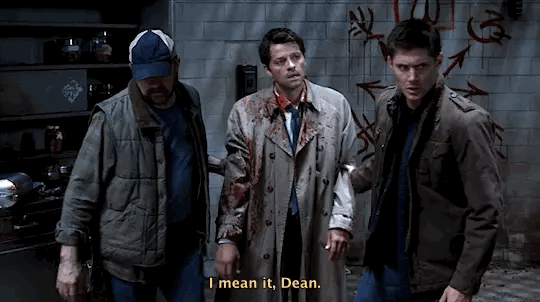
Episode: 7x01
This tear in spacetime was the culmination of Castiel’s Season 6 character arc. It was the final, greatest betrayal, the irredeemable course of action which struck his relationship with the Winchesters a fatal blow-- and though his last act was to attempt to right his wrongs, the emergence of this rift meant estrangement and death for the relationship (and for Castiel.)
This incident is established as far more significant for Dean than it is for Sam, so I won’t spend much time justifying my classification of this rift as primarily DeanCas. It’s made pretty damn clear through Dean’s behavior throughout Season 7.
Castiel’s departure catalyzed the emergence of Leviathans. As the lore promised, they brought death and destruction to the whole ecosystem, purging the show and readying it for reincarnation; but I’ve already made this point.
As Destiel 1.0 dies, Destiel 2.0 is born.
~~~
The Purgatory Portal

Episode: 8x07
Let us journey back to "A Little Slice of Kevin"-- the gayest thing to happen to Supernatural up to that point. Suddenly, Dean and Cas’s ambiguity is no longer a joke. It’s no longer flippantly referenced, but Built Into The Narrative In A Noticeable Way. After Season 7, Season 8 shocked the system, earning Purgatory celebrity status as the Destiel fandom exploded back to life.
But, more important things. The events surrounding this portal not only codified romantic subtext, but reshaped their relationship by putting it in grave peril. Lovers trapped in separate worlds. There’s only like ten thousand examples of this in other fictional, romantic(-ally coded) relationships. Sigh.
As Destiel 2.0 dies, Destiel 3.0 is born.
~~~
Seasons 9, 10, and 11 are filled with near misses. Divisions between worlds/fates test and change their bond -- Heaven and Hell exert tremendous force on both, and the gates of Heaven and the Darkness’s breach of barriers flirt pretty openly with the rift theme -- but there isn’t anything that fits the profile cut and dry, so let us leap to Season 12. Five long years of glacial shifts, five long years of a slow, steady amping up of queer subtext. An argument can be made that it had graduated from subtext in some places, but both fandom and GA were frog-boiled enough in their interpretations for this argument to be an aside.
Destiel 3.0 reaches a transitional stage, and becomes Destiel 3.0+.
Now, It’s season 12. And like goddamned CLOCKWORK, six years after Season 6, another unstable tear in spacetime appears, and terminates Castiel’s character arc.
Rift? Check. Cas dead? Check. We’ve seen this pattern. Time for shit to CHANGE. And boy, did it.
~~~
The Rift

Episode: 12x23
Oh, boy. Oh boy, oh boy, oh boy. Castiel’s death in the Season 12 finale was a magnum opus of SPN’s romantically coded imagery. I could elaborate, but if you’ve read this far into this post you likely already know what I’m talking about. My point is, a hall of mirrors is the chosen space in which Destiel 3.0+ is killed.
The relationship death lasts only a short while; their estrangement in separate realms is a five episode-long period of detachment and review. Our characters, as well as the viewers, stride through a hall of mirrors. In solitude, this DeanCas winter becomes a chance to reflect, because there is no better way to get a feel for the importance of something than to eliminate it. The crucial elements of Dean and Cas’s relationship, what they mean to each other, becomes clearer than ever before because, look! This is Dean without Cas! This is the show without Cas! Don’t you hate it?
I mean, guys. Mirrors. Cas spoke to a reflection of himself in the Empty. Literally. He addressed his greatest fears about relationships with himself. He was forced to rewatch his greatest mistakes, and what gets featured? Our first two DeanCas rifts. F*ck this show.
DreamHunter parallel! 13x10 reenacted this scene for us with Claire and Kaia.
Then, 13x05 changes the whole game once more. You know, the episode titled Thanatology. The study of Death. Fuck this show.
As Destiel 3.0+ dies, Destiel 4.0 is born.
~~~
The intensity of the queer narrative amps up continually. Things are getting harder to write off.
Rifts between worlds, crossover and confinement, and estrangement, and the blurring of lines, and the breaking of old taboos/breach of old barriers dominates the remainder of Season 13 and Season 14. We hold this broad focus for a long time, and Dean and Castiel become the emotional equivalent of the plot arc, always there, brewing, but taking a backseat to the Big Stuff. A wall rises, and solidifies. Silver Pole of Communication Barriers, anyone?
Then? Season 15 kicks us in the Destiel balls.
Full disclosure: I didn’t see this next part coming. I dared not ask season 15 for anything this significant, so the last scene of 15x08 just about took my life.
~~~
The Purgatory Rift

Episode(s): 15x08, 15x09
Dun dun DUN!!
This twist was my favorite Christmas present, because it communicated to me that the writers have an understanding of Dean and Cas’s history to match our own. Not only are they actively writing them utilizing the Destiel playbook, they obviously care immensely about the destiny of their relationship. I am speaking too soon to say this definitively, but this mission has all the hallmarks of a plot device designed to serve many purposes in respect to Dean and Castiel. They’ve got ALL the ingredients. There are so many things tied in here that it gets pretty damn near fanfiction territory.
Please read my reaction to the purgatory twist if you need context, as I don’t feel much like regurgitating it. This post is long enough, lol. (A bloom that grows only in one place? Fuck you, writers. You’re going to KILL me.)
~~~
So, to recap: In a universe defined by barriers and guidelines, a relationship that refuses to be defined will be under constant siege. Dean and Castiel suffer from the sheer reality of walking lines between two designated states of being-- friends and lovers, angel and human, take your pick. The current order isn’t friendly to beings who don’t fit a category. Until the barriers are stripped away, they cannot exist as they are, and rifts will continue to rip them apart.
The Purgatory Rift of 15x08 is such a big deal because it fuses themes. The rifts of the Dabb era have merged with the gateways of the Carver era. Not only are our long-standing almost-lovers returning to their relationship’s place of origin, they are doing so by breaching physical barriers designed to keep them apart; and all the while, the most dangerous, important rift is not the one in the fabric of reality, but the one in their relationship.
I expect this major rift to end no differently than it has in the past. Dean and Cas will be separated, and Cas will be out of reach. And then, they’ll be reunited. But, where will that take us? What will the next reincarnation look like?
As Destiel 4.0 dies, something will be born.
#who sucks at tags? me#spn meta#spotting patterns#symbolism#destiel#purgatory#spn s7#spn s8#spn s12#spn s15#theme: rebirth#endgame speculation#15x09#15x09 speculation#rifts#mine
482 notes
·
View notes
Note
I'm scared for oscar, what do you think will happen next episode with him? He better be ok! 😭
I,for the most part, think Oscar is going to be just fine. I know some FNDM famare freaking out about Oscar running into someone dangerous like a villain butthis squigglemeister isn’t in that boat. Oscar’sfeelings in all of this is something that the plot has side-lined since V6 C4 and I’ve been patiently waiting on the episodes that will focus on him. Now that C8 has set that upfor us, I’m just here hoping that Oscar gets to have his development and growthuninterrupted.
I don’t care what theCRWBY Writers decide to do with the finale for V6, so long as Oscar gets tohave his full two episodes of backstory and depth; just as how Ozpin got his. I DON’T believeOscar is the one in immediate danger. The person I’m concerned themost for is Qrow since the opening highlighted him being snatched byGrimm Arms. So if anything Qrow’s in danger. NOT Oscar. So I’m not worriedfor our farm boy’s safety. Just how well the CRWBY Writers will handle hisdevelopment.

WhenJinn revealed Ozpin’s entire past in C3, we got to see the aftermath of that in C4. Sobasically we got 2full episodes involving Ozpin’s past and the team’s reactions tolearning the truth. I expect the same pattern for Oscar’s Missing Farm Boy Arc.
ForOzpin, we got the set-up of his reveal with the awakening of Jinn in C2before we got the full backstory in C3 andthe outcome in C4.
ForOscar, C8 wasthe set-up to his disappearance. Now I’m hoping that C9 willmost likely be anotherlong flashback episode where we getto learn more about Oscar’s personality through his relationship with themembers of RNJR in memories of thetime he lived with them back in Mistral before the arrival of the others forthe Battle of Haven.

By the end of C9, I expect the group to find Oscar safe andsound on top the Great Wall of Argus just quietly watching the sunrise becausethat’s something he did back home on the farm. Remember, when Oscar debuted back in C4, hewas first introduced getting up at sunrise to start his farming chores. So Ithink that’s what the group will find him doing, just watching the sun riseover the mountains before Argus because that’s what’s reminds him of home---ofhis old life---of himself. Since the group are currently looking for Oscar at night, I’ll bet that by sunrise the next morning, they’ll surely find him.

Thenin C10we’ll get to see the aftermath of thesearch from C9 all wrapped up in another flashback episode, this time from thepoint of view of Oscar as he walks through the lonely streets of Argusrecalling his past from when he lived with his aunt on their farm before and aftermeeting Ozpin. I believe that C10 will be the tie in episode from Oscar’s story way back in V4 highlighting all the omitted scenes of his narrativewith Ozpin. We’ll get to see more of what Oscar’s life was like with AuntiePine and we’ll most likely get to see the crowning moment that defined whyOscar chose to leave home after being resilient for so long.
A part of me thinksthat Oscar decidedto leave for Mistral after saving his aunt from a Grimm attack.Remember how in V6 C4,during Ozma’s first time reincarnating, he took control of another farmhand,like Oscar, in order to save a civilian from a Beowulf during a Grimm attack.





Duringthat moment, I found it rather coincidental thatOscar was the one viewing that memory. I know part of it was to further justifyhow much Oscar and Ozma were practically forced into the same predicament. But Ifeel like there is bigger parallel tothis scene. This is probably what happened in the missing part from Oscar’sstory in V4! When Oscar first arrived in Mistral, he was already fully aware of his ability toswitch souls with Ozpin so that hecan take control. How would he know that if there wasn’t a situation whereOscar needed toswitch with Oz?
Ifeel like before leaving home, something must have happened where a Grimm probably attackedOscar’s farm and Oscar had to allow Ozpin to take control in order to save hisaunt.
Picture…young Oscar, armedwith nothing but a pitchfork, singlehandedly up against a horde of Beowolves thatswarmed his family farm with Oz taking over to cut them down much to theamazement of Auntie Pine. If there was ever a moment for an Ozpin/Oscar character theme to drop it would be here.
Witnessing her nephewfend off a Grimm attack on his own to save her must’ve been what convincedAuntie Pine to let Oscar go ahead toHaven and join the huntsmen. Even if Auntie Pine was against Oscar leaving homeat first, I’d like to think that in the end she gave him her blessing after seeing his potential for greatness---even ifit wasn’t exactly him at the time.

Mypoint is that there are missing pieces from Oscar’s side of the story that goesall the way back to V4. V3 even if we’ll actually get to see how ProfessorOzpin died and wound up reincarnated inside Oscar in the first place. The time Oscar spentwith Ozpin in V4 and the time he spent with RNJR in V5, those are key flashbacks that need to be shownand I feel like we’ll get to see those soon between V6 C9 and C10. At least that’s mytheory.
IfOscar is to have his day, I want it to go undisturbed. No villains. Just two full episodes where the focus is juston Oscar and the team’s ties to him and even Oz. That’s what I want.That’s what I expect.
Wegot it for Ozpin between V6 C2-C4. I expect the same for Oscar between C9 and10. I’ve received this question a lot since the recent episode and I willgladly repeat my theory as many times as needed until it sticks.
IfI was right about Oscar going missing in Argus then I hope I’m right about thistoo.
~LittleMissSquiggles (2018)
#squiggles answers: rwby#oscar pine#professor ozpin#oscar and ozpin#rwby theories#rwby volume 6 theories#rwby volume 6 spoilers#hellofriend
52 notes
·
View notes
Text
Dylan Carlson’s Theme for an Imaginary Western // Interview



Feature by Kate Koenig via Premier Guitar After nearly 30 years as the only constant member of drone-doom-metal cult heroes Earth, guitarist Dylan Carlson has released his first album, Conquistador. As the title suggests, the work espouses a fantasy world that’s rooted in history, not unlike the one explored on Earth’s 2005 Hex; Or Printing in the Infernal Method—a belated imaginary soundtrack to novelist Cormac McCarthy’s Blood Meridian. Carlson has also done soundtrack work, under his solo moniker drcarlsonalbion, for the film Gold. But this time, the music speaks exclusively to his personal vision.
Carlson has always been known for wading against common trends—an approach that’s helped him define his voice in the sparse, expansive sound of Earth. Like most artists, he’s proud of not fitting into a mold. “I make records for people. I don’t make records for guitar players,” he says. But it’s not an exclusionary statement, just one that acknowledges the detachment he takes from the technical and cultural associations with the instrument while songwriting. Drawing heavily from his tastes in film and American history, he gradually and steadily builds a world on the all-instrumental Conquistador in which he becomes more of a visual architect than a guitarist, exploring the negative space between rich, textural tones.
The minimalist, ambient compositions on Conquistador rely on the subtle personalities of Carlson’s guitar tones, which he achieves with a lot of patience, trial and error, and the perfect combinations of gear. Though, he admits, gear is not as important to him as it used to be. “There’s no magic box or magic amp. It’s all you, for better or for worse,” he laughs. Even so, he keeps a particular family of pedals—“discovering compression was a godsend”—and has refined, over the course of his career, the routes to creating the precise hues of distortion to furnish his sonic world. On the album, he worked with producer and Converge guitarist Kurt Ballou, and is accompanied by his wife, Holly Carlson (who’s also the model on the cover), on percussion, and Emma Ruth Rundle on baritone and slide guitars.

What inspired you to write your first solo album? We had finished a lot of touring with Earth, for our last record for [L.A.-based label] Southern Lord, and we had just changed management. I had some ideas for some songs, so it seemed like a good opportunity to get into a studio and get some music done. The idea originally was in the vein of Hex, which was sort of a soundtrack to an imaginary film, and the other soundtrack I did for the movie Gold. Conquistador is also sort of Western-themed, and a soundtrack to an imaginary film. Since soundtrack work is something I’m really interested in, I hope to get to do another one at some point, but until then, I guess I’ll keep doing imaginary film work. [Laughs.]
So if Conquistador is a soundtrack to an imaginary film, is that film a Western? The era that Conquistador envisions is during the initial collision between Europe and the New World. When I was in junior high, I lived in Texas, and we had a Texas history class where I read about a conquistador. He had a Moorish squire named Esteban, and they went to what was then Northern Mexico, now the American Southwest, and got lost for 20 years. They had a bunch of, I guess you could say … “adventures” where they were sold into slavery by one tribe and escaped, and worked with another tribe—basically, things didn’t go as planned. The album was more based on this memory of the story rather than the specific text. I’ve also been influenced by a number of my favorite films, like The Fountain by Darren Aronofsky. So it was a bunch of little things all bubbling around. Is your guitar playing usually guided by that kind of visual experience? I’ve always been visually oriented when it comes to guitar playing. When I first started, I’d find patterns on the guitar and see how they sounded, as opposed to being an ear player. And as I’ve progressed, I’ve become much more of an ear player. Also, since the title is the only verbal cue to describe the narrative arc of the song, I’m very conscious of the way the title looks or sounds. I’m always trying to look for something evocative, ’cause I’ve always believed there still needs to be narrative arcs to the songs—even songs that I do with a lot of repetition. I believe that there should be a narrative arc to the record as well, which I feel is something that’s a bit lost with the advent of the CD, and now digital media. It’s the order of the songs that makes a great album, as well as the songs themselves.

How do you give your music a narrative arc? Usually it’s through textural cues. I’ve always been interested in subtle dynamics in music. The thing that always bugged me about grunge is it reduced musical dynamics to “here’s the quiet part and here’s the loud part,” and I’ve always preferred music where the textures and the interplay of instruments build small crescendos and dynamics in that way. The intensity in the playing, you know? And then I was lucky in that Emma Rundle joined me to add her music to mine. I’ve definitely always been a believer in that approach—where if you limit the options in certain things, it forces you to become more creative with what you have. I’m also a strong proponent of what I like to call “happy accidents.” What is the ratio of improvised versus composed music on the album? I don’t know … 80/20? [Laughs.] The riffs were there, but the structures were done in motion. And then a lot of it had to do with the fun of looking for guitar tones. Some songs are more composed than others, but even with the ones where there’s a strong compositional presence, I’ve always believed in leaving room for improvisation. The most composed song is the last song of the album, “Reaching the Gulf.” There’s the basic riffs, but then the arrangements sort of happened naturally as I played them in the studio, so they have much looser organization. Which, again, I think helps with the narrative arc of the record, because it’s about leaving, heading into the unknown, and then stuff happening that you don’t foresee, and then the return at the end to a controlled environment—or at least a more controlled environment. What is it that draws you to repetitive patterns? I’d always hear stuff in other songs and be like, “that’s a great riff, why don’t you just keep going with that rather than immediately jumping to another one?” I always liked Indian music and psychedelic stuff and, obviously, blues. Maybe it’s this atavistic thing from my Scotch heritage, like the bagpipe or something. [Laughs.]
How was it working with Emma and Holly on the album? I played a show with Red Sparowes and Marriages, bands Emma was playing with, and I borrowed some of her gear that night. And then she’s on [our label] Sargent House, and my wife, Holly, and Emma got along quite well. I think she’s a fabulous musician and she really added a lot to the proceedings. Holly was travelling with me at the time, and we needed extra percussion. She played piano when she was younger and sang in choir. She was also a dancer, a belly dancer, so she has good rhythm [laughs], so that’s sort of how that happened. It was also my first time working with Kurt Ballou, which was really enjoyable. He has a cool studio and a really good ear and a lot of helpful ideas. At the same time, he doesn’t force them on you. He’s really open to your ideas. And then he has a lot of interesting equipment. But it was a very easy record, in a lot of ways, because it flowed quite well and everything that needed to get done got done. I enjoyed it. I hope other people do, too.
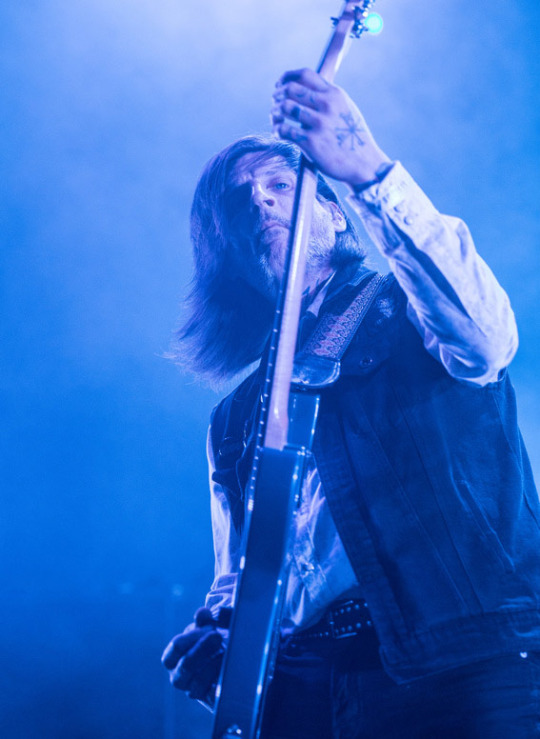

Let’s talk about gear. How important is your gear to the songwriting process? I’m much less gear-centric than I used to be. I realized over the last few years that no matter what I use, I’m going to get my sound and be me. And obviously, there’s slight variations based on gear choice, but I realized I could have saved myself a lot of time and money in the early days.
What guides your preferences? I don’t like a lot of pedals. I think there’s almost too many to choose from nowadays. [Laughs.] I see some people’s pedalboards and I’m, like, confused. I think some of the prices on gear lately are ridiculous. You don’t need to spend $10,000 to sound good. I’ve always been a big MXR fan. I use a Custom Comp, which is the sort of nicer version of the Dyna Comp. I love the regular Dyna Comp, too, but I find that the Custom Comp has a lower noise floor. And then I like the Shin-Juku Drive for distortion. Then, I just got this HBE Dos Mos, which is a dual MOSFET preamp. I really like it because it allows me much more textural options, where the distortion becomes a texture, too, so I can also do a loud cool sound. In the studio, I’ll end up using more modulation to separate the tracks and to color them. Live, I reduce the number of effects I use.
What about amps? I’ve actually gone solid-state. [Laughs.] I have a bunch of tube amps lying around and they all need servicing and are annoying to carry around. Right now I’m using a DV Mark 50-watt solid-state head, and I have a Crate Power Block solid-state head. I think a 50 watt is the largest head you’d ever really need. You’re never gonna get to the sweet spot on a 100-watt head, you know? We all grew up with pictures of Hendrix with these huge amp stacks, and that was because they were playing without PAs. Nowadays, you don’t need to do that.
One of the best shows I think we ever did was opening for Neurosis in London, and I was playing an old WEM Dominator, which is basically a 15-watt amp. People were saying how great we sounded that night, and no one thought we were too quiet or not loud enough. Because a 15- or 30-watt amp will scream. People seem to forget that you double the wattage of the amp and you’re only increasing the actual volume by 3 dB. All you’re increasing is your headroom. If you want the harmonic enrichment, you have to drop the headroom.
How did you first get into guitar? I guess my favorite guitar would be the Tele. Right now I’m on a bit of a Strat jag. I’ve played other guitars, but I always seem to come back to the Fender style. I find them the best for touring, ’cause they have the straight neck instead of the angled headstock, and they’re not finicky. They get the job done and they take the road really well—whereas set necks and headstocks that are angled are accidents waiting to happen.
How did you first get into guitar? My parents were into music, so I grew up with a lot of music around me. But no one really played an instrument. And then when I got into music, as in buying my own, AC/DC was the first band I got into, and that’s what made me want to play rock ’n’ roll, I guess. For a long time, I wanted to play guitar, but never really got around to it. Then one day my dad suggested it, so I bought one finally on my 15th or 16th birthday. A good friend of mine at high school who was a big prog-head showed me a few chords, and that was sort of my beginning. I immediately started trying to write songs rather than learning other peoples’ songs. I taught myself the rudiments of theory. Although, the thing I’ve always tried to remember is, the music comes first—the theory grew out of that, not the other way around.
What influences your guitar playing? I’d have to say the guitarists I really gravitate to serve the music or serve the song—people like Steve Cropper or Cornell Dupree. I’ve always felt like the thing that really motivates me is, “Is the riff something that’s worth repeating, and does it convey my conception of the song?” I always find it very interesting when people talk about a song I’ve done, and they’ll say it’s similar to something I may have thought about the song, and the landscape I may have envisioned for it.
Earlier you mentioned how the music industry on the whole has somewhat lost sight of the album. Do you think this would ever shift your approach to your own music? When I was young, Buzz from the Melvins was talking to me and he said, “There’s two ways to do things.” He was speaking specifically of music, but I guess it could apply to other things. “You can try to jump on the trend, or what’s happening at the moment, and you might succeed famously, but you might not. Whereas, if you do what you do and you just keep doing what you do, eventually people are going to pay attention to it, hopefully.”
I’ve always tried to follow that advice. I just do what I do, and just try to keep doing what I do, and it’s obviously not the quick route, but it’s seemed to work up to this point. I haven’t had to take advice from record labels, or play songs by hit songwriters I don’t know or don’t like, or dress up in clothes I don’t want to wear. You may not have a mansion on MTV Cribs, but you can go to sleep at night and look at yourself in the mirror, hopefully.
6 notes
·
View notes
Text
Jimin’s journey in the Bangtan Universe #9: A picture, a painting, rain, fire and tears
#0: Intro #1: The one who laughed the loudest #2: In this place of eternal mayhem the party never stops #3: Youth is not coming back #4: An impression of being stuck #5: “I’m trapped inside myself and I am dead” #6: The forbidden fruit #7: Darkness crept in #8: A deal with the Devil
A major overarching theme in Jimin’s storyline throughout all of the assorted media I have previously discussed is the constant stifling feeling of loneliness and isolation. From the very beginning it has felt as if JM was always on the sidelines, only tangentially connected to the main focus of action. You could have gone in and plucked him out of the whole HYYH narrative arch and it wouldn’t have made any difference. No one else’s storylines would have been disrupted in any way without him there. Nothing would have changed.

It’s impossible to say if it’s due to having seven members and a limited amount of minutes to use to tell their stories, or if they’ve obscured his role on purpose. Somehow I tend to think it the first case. I assume they started out with a kernel of an idea and with the success of the concept they’ve kept adding stuff in, picking out threads to pursue and creating a mythos around what had already been done.
I think it was Suga who in a recent interview put emphasis on the “expandability” of the Bangtan Universe. At this point they, the members, the producers and the filmmakers, are literally free to do whatever they want with the narrative. Something that maybe was planned two years ago might have been scrapped already. New ideas and directions are probably being considered as we speak. Nothing is set in stone.
That being said, I’m going to go ahead and share a few more observations. I’m not presenting any real theories and I’m not pretending to know what they are supposed to mean. I just want to point them out.
The interactions between the members has up to this point been quite limited. There are certain relationships between the seven that have been carried through different eras without much overlap. Meaningful relationships between the maknae line members especially are virtually non-existent. There are however some cross-references and other parallels between Jungkook and JM’s Wings short films and since Lie is such a pivotal moment in the character development for JM, I think it needs to be explored.
At the very beginning of the Lie SF JM is shown a card with the circular symbol revealed at the end of JK’s Begin SF. JM looks at it, shrugs and shakes his head. The moment is brief but since we know JM’s lie was him pretending not to remember, his shrug here does feel purposeful.

As for JK, the most important elements of his story in the HYYH videos are his special relationship with Yoongi and the car accident towards the end of the INU MV. Both of these are referenced in his Begin SF through the use of sound and intercut footage. Most of the SF however consists of a sequence having to do with a picture, a painting, rain, fire and tears.
I’m sure there are a hundred different theories out there about this scene that work well within the context of JK’s personal storyline. But since this is a JM analysis, it means I’m going to take my biased, pattern-seeking brain and apply it from one point of view only.
Here’s what I mean:

Also:

And finally:

The fact that water, fire and crying are all very much present in this SF seems noteworthy. Water is JM’s theme and starting with the Wings era rain seems to follow him as well. The use of a lightning effect draws a parallel between the Begin SF and JM’s storyline in the HLR.

Fire of course is more of a YG symbol but as discussed before, JM burning a paper and a polaroid at the end of both the INU and Run MVs respectively does link him to fire, YG and now JK too. Yoongi’s burning piano appears in both the Lie and Begin short films.

There’s also the bit about the trees. In the Lie SF, we see a road sign pointing the way to an arboretum, a botanic garden for trees (yes I googled it). This image has absolutely no context in the short film, just a throwaway clip and some wacky filters. However both the Begin and Lie SFs have remarkably similar footage of trees in them.

I’m fairly certain the treetops are supposed to represent the same place. The Lie SF made an effort to convince us that the image was an illusion, only a painting of trees. But in the Begin SF there is a bird flying across the blood-red sky so we know the place actually exists. Whether or not it’s the arboretum, I don’t know.
In his SF JK is painting the image of the boy when he suddenly hesitates. It starts raining and paint drips down on the canvas. He seems to be getting more and more anxious. There’s the sound of JM’s apple falling into water (identical to the sound used in the Lie SF) and JK begins crying and shaking his head in obvious distress.
Like I said, I’m sure there are alternative explanations to all this but I guess I just like the thought that there was someone out there who could “see” what was happening to JM and who was crying out for him. Even if they couldn’t help him then.

There is no real resolution to JK’s short film. The painting burns, a drawing of (most likely) YG has turned into a bird, a bird flies over the treetops and finally JK himself seems to turn into a bird as well. There is a vague phoenix from the ashes metaphor there.
Next up >> #10: A redemption and/or salvation arc
#jimin#jungkook#bts#jikook#bangtan universe#film analysis#hyyh#lie#begin#blood sweat & tears#wings#jimin's journey
56 notes
·
View notes
Text

Thanks to the lovely @marvelmom for taking the time to answer these! Get to know more about her, go give her a follow and then show her some love!
These questions are from this list. You should check it out, there’s 50 questions all together and they’d be great to ask your favorite fic writer!
1) How old were you when you first starting writing fan-fiction?
A woman never tells her (fanfic) age ;)
2) Do you prefer writing OC’s or reader inserts? Explain your answer.
I can't honestly say that I prefer one over the other since I've never written a fic for an OC. I guess my style of writing is better suited to allowing readers to insert themselves into the narrative. I like the challenge of writing a character that allows the reader to flesh out in their own image but still have some substance on their own within the story.
3) What is your favorite genre to write for?
Is smut considered a genre? LOL. Seriously though, I love humour so you'll find most of my stories have an underlying comedic thread. I have a really dark sense of humour and I'm sarcastic af so I love when people respond favourably to it in my writing.
4) If you had to delete one of your stories and never speak of it again, which would it be and why?
Wow, this is a really good question! I think it would probably be the very first fic I wrote called "Marked." I wrote it for a friend when I was deep in the Cumberbatch fandom. She was complaining about the lack of Khan fics so I wrote one for her. It's on Ao3 and every now and then I get a kudo and I cringe. The writing seems so basic and stilted compared to my newer works. If anything it shows how much I'm improving.
5) When is your preferred time to write?
I find I do my best work late at night. I'm a single mom with a full time job and busy teenagers so I don't usually get to sit down at my computer until after 11pm. I love being able to leave the day behind and just focus on my writing without any interruptions. I typically go until 2am. It's a little crazy but writing relaxes me and helps me sleep better. And it inspires some really great dreams ;)
6) Where do you take your inspiration from?
Most my inspiration comes from real life, my experiences and passions like music, film and literature. I like to daydream and I find I'm constantly having conversations with characters or constructing scenes in my head. I'm a little crazy I guess lol
7) What’s your favorite scene that you’ve written?
Another great question...let me think. I have one in my head that I haven't written yet that I know will eventually be my favourite but at this very moment it's the scene in Chapter 10 of The Contest where Bucky and the reader are dancing in the antique store and they finally kiss. It was the very first scene that came to me when I started to think about this story and to finally get to write it was incredible. But man did I stress over it...I wanted it to be perfect. Exactly like I had pictured it in my head.
8) Have you ever amended a story due to criticisms you’ve received after posting it?
Hasn't happened yet. I'm very stubborn and it would take a lot for me to deviate from the vision I have playing in my head. My muse won't let me rest until I've captured a scene note for note on paper.
9) Who is your favorite character to write for? Why?
Bucky! I can't seem to get him out of my head. For me, Bucky is the most fascinating character in the MCU. His story arc has brought him from one end of the spectrum to the other and back again in so many facets and I love exploring these layers of his personality,
10) Who is your least favorite character to write for? Why?
Thor but only because I stress over his speech patterns when I'm writing his dialogue. I want to make sure I'm doing his character justice and capturing him accurately on paper.
11) How do you come up with the titles for your stories?
For one shots, I usually wait until I'm done and then riff on a major theme in the story or what inspired my to write it in the first place. The title for "The Contest" series came from the Seinfeld episode of the same name that inspired the story.
12) What do you think is the best idea you’ve had for a story so far?
Considering that The Contest is my very first Bucky fic (and series) I would have to say this is my best story idea so far. More to come I hope ;)
13) Do you have any abandoned WIP’s? What made you abandon them?
Thankfully none yet! I find that when story pops into my head I can't move on until I get it down on paper and out in the wild.
14) Are there any stories that you’ve written that you’d really love to do a sequel to?
I get a lot of requests for part 2 of "Three Creams, No Sugar". Everyone wants that shower scene ;)
15) Are there any stories that you wished you’d ended differently?
Yes, Infinity War. Oh wait....do you mean one of mine?
16) Tell me about another writer(s) who you admire? What is it about them that you admire?
Oh wow, there are so many incredible writers in this fandom that it's hard to pick just a few. I'm grateful to have fallen in with amazing writers such as @evansrogerskitten, @Thewife101 and @avenger-nerd-mom on Twitter. Their support and guidance are the reasons I gathered up the courage to start posting my fics on Tumblr.
Writers like @unicorns-and-fairy-dust-blog own my emotional ass....Dre is the master of angst. I love the wit and humour in @tilltheendwillIwrite 's stories - I think it's a Canadian thing born out of bitter cold winters and ketchup chips. @lovelynemesis has such a great style of writing, very flowing and descriptive. The depth of talented creators in this fandom is insane. There are just too many to mention!
17) Do you have a story that you look back on and cringe when you reread it?
Definitely "Marked"
18) Do you prefer listening to music when you’re writing or do you need silence?
Complete silence. If I have music or Netflix playing I start to daydream and boom, a whole new story.
19) Have you ever cried whilst writing a story?
Not while writing but as I listened to a song and imagined a Bucky one shot to the words. I was ugly crying by the end. I may get around to writing it one day..
20) Which part of your fics have been the hardest to write?
I would say the first few starting paragraphs of a new story or chapter. I take way too long with the beginning sections.
21) Do you make a general outline for your stories or do you just go with the flow?
I pretty much have the whole story plotted out before I get started. "The Contest" has been in my head from beginning to end for over a year now.
22) What is something you wished you’d known before you started posting fan-fiction?
I wish I had known about Tumblr to be honest. It's a great outlet for fanfic and the source of so much inspiration and support.
23) Do you have a story that you feel doesn’t get as much love as you’d like?
I'm always in awe of the fact that people want to read my stories period so I appreciate every single note, comment and message whether it's 4 or 400 :)
24) In contrast to 23 is there a story which gets lots of love which you kinda eye roll at?
I'm always in awe of the fact that people want to read my stories period so I appreciate every single note, comment and message whether it's 4 or 400 :)
25) Are any of your characters based on real people?
Not so much characters but personality traits. I find that I project my style of humour and sarcasm (plus my lack of filter) onto characters all the time.
26) What’s the biggest compliment you’ve gotten?
I must be the slowest writer in this fandom. I seriously don't know how you all put up with me. I've had so many incredible compliments but it always amazes me to hear readers tell me that a new chapter was worth the wait.
27) What’s the harshest criticism you’ve gotten?
One that really stands out is someone telling me that I was going to lose all my followers if I didn't update my fics faster. That one really hurt because like most writers here, I really beat myself up knowing that I can't turn around stories or chapters as quickly as I would like.
28) Do you share your story ideas with anyone else or do you keep them close to your chest?
I have a few writers here that I talk to regularly and we feel comfortable enough to share our ideas. Some of my favourite messages have been from other writers wanting to talk through an idea or ask for some help with a scene or ask for some help with a scene or some dialogue.
29) Do people know you write fan-fiction?
Aside from a few twitter mutuals I have met, no one in my "real life" knows I write fanfic. Though I think my kids may have their suspicions...I have a writing degree and my friends and family are always telling me that I should write more. If they only knew LOL
30) What’s you favorite minor character you’ve written?
I can't tell you because they are about to make an appearance in the next chapter of "The Contest" and I'm excited to write their scene.
31) What spurs you on during the writing process?
The incredible feedback and messages I get from readers like you (I live for your chapter summaries....seriously), pictures of Sebastian Stan, reading all the amazing fanfic out there, Bucky's thighs, Marvel, eating chocolate....eating chocolate off of Bucky's thighs.... (Need to add that to my list of future fics)
32) What’s your favorite trope to write?
Definitely slowburns. I love the flirting, the teasing, the witty dialogue as the sexual tension builds....it's delicious.
33) Can you remember the first fic you read? What was it about?
This is going to date me....please no judgment. It was a 'NSYNC fic. Wish I could remember the name but it was a JC x reader. I was obsessed with JC back in the day...ok, stop laughing.
34) If you could write only angst, fluff or smut for the rest of your writing life, which would it be and why?
SMUT with my fucky Bucky and my side boo Sebby ;)
1 note
·
View note
Text
Telling Stories - Lecture + Seminar Notes & Set Task
· Surrounded by stories – true stories – family events or fictional stories
· Tell stores via social media via status and ‘stories’ - sharing a narrative
· Texts that can hold narratives – novels, comics, films, photographs, paintings, illustration – broaden what text is poetry, Instagram, songs, music videos – visual image considered by text

We can each be seen as a narrate – memories construct who we are – broaden notion of text
· Plato talks about stories and folk tradition that holds culture meaning – narrative from visual image – everyone has a different narrative of the painting before us – competing narratives within image – narrative within colour, texture
· Story of a story
· Title guides you to a narrative with the imagery reinforcing that but also telling more stories
· Your level of semiotic understanding limits your understanding of the image
· Narrative changes with the age that is looking at it - each generation is reclaiming words to subvert their original meaning.

· What is the first story you remember being told?
“A need to tell and hear stories is essential to the species Homo-sapiens – second in necessity apparently after nourishment and before love and shelter. Millions survive without love or home almost none in silence; the opposite of silence leads quickly to narrative, and the sound of story is the dominant sound of our lives, from the small accounts of our day’s events to the vast incommunicable construct of psychopaths’ – Edward Reynolds Price – when nothing material remains we still have cultural stories and identities built by these stories.
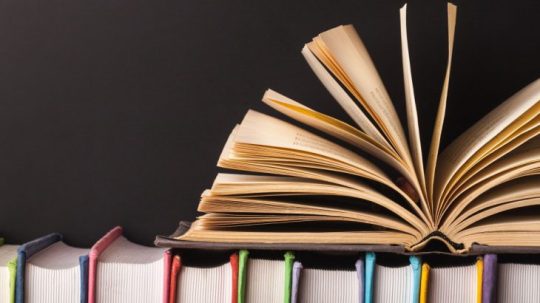
· There’s a large pool of stories we like to retell such as Romeo and Juliet – this links that no idea is original – universal metaphors – passing messages down through the metaphors – themes such as love, hate and conflict
· Each version applies to the new generation of the time – not just about culture
· Narrative is a document of it times
·Retold is different ways reach’s different audiences – becomes relevant to the year, the generation and what’s happening around us in the world
· Same old story – The taming of the Shrew vs 10 things I hate about you – same stereotypes apply in both stories


·Disney Princess reflective of the times – change in female character in current years – reflects cultural narratives
Cultural stories – help a community structure and assign meaning to history and their existences – include creation stories – community origins and fables which help teach moral values and ethical behaviour. Can help a community reinforce social norms and strengthen identity.

· ‘End of the World’ – types of stories we engage in – disaster films – global north – good vs bad – plays on climate change and the fear the goes along with – biblical repetition

Cultural stories – old folk tale – Juha and his donkey appear in many forms – adapted from an older oral tradition – inspired other stories – central to Arabic story telling culture – gulf region – donkeys still in pop culture
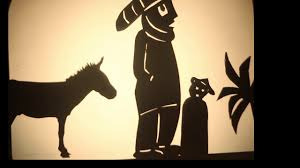
What’s the difference between ‘story’ and ‘narrative’ = story is a sequence of events (plot) – Narrative is the way those events are put together to be presented to an audience. – politics and moral value
· Royal Family – all the same story – narrative different in different sources such as newspapers – depends on the newspaper’s values

‘Narrative Theory starts from the assumption that narrative is a basic human strategy for coming to terms with fundamental element’s of our experience’ – how ‘narrative is different from other types of discourse’- ‘how stories help people make sense of the world, whilst also studying how people make sense of stories’
Matt Madden, 99 ways to tell a story – narrative changes in each comic – told in several images’ vs told in a one frame – same events, same story but a new narrative due to the construction of the story e.g. the way the story was put together not just the story itself.
Meaning in the colour – different representation
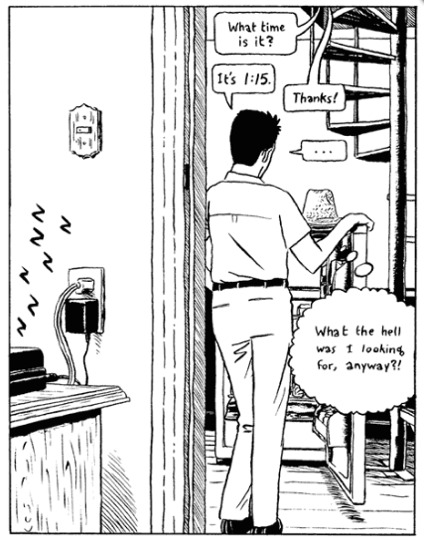

Narrative hard to pin down within work – so bland and boring – directly relatable – mundane experiences – plays with language within narrative making it obscure
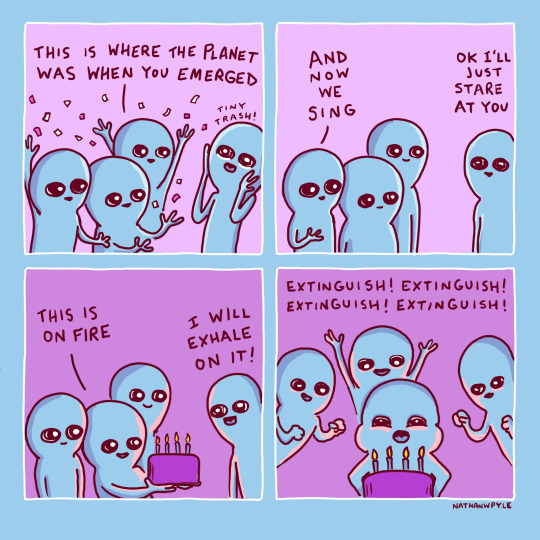
· Narrative of the image Dorothea Lange – ‘The Migrant Mother’ – elements missed within the frame such as the women having more children, she has also been posed – the narrative was created by Lange but it is not really telling the truth of this woman – created as an image for the great depression

The picture of revellers in Manchester – viral sensation due to it resembling a painting
· The Fibonacci sequence – Renaissance artists would use the ratio with the visual ad of the Fibonacci spiral which is created by drawing circular arcs connecting the opposite corners of squares in the golden rectangle.
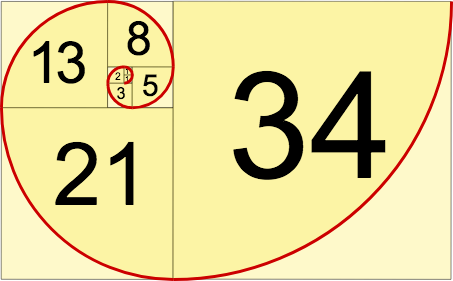
· Narrative in digital age – due to screens narrative cannot be read like looking at a person and hearing their voice – how is a tone created in social media – can be done visually but also done with text and emojis
· Accidental storytelling – the tone of a narrative can be lost – digital debate is often tone deaf
· Narrating debate – done by ‘upper class gentleman’ – juxtapositions
· Narratives in different forms – in our society there our multiple belief patterns and different types of narratives which are for the majority suppressed. The dominant classes have created the norm, a standard that is passed off as natural. This standard is reinforced by institutions such as schools and the church. Subjugated narratives have been continually produced as a response to dominant ideology. – form of protest
· Outsider art - something that’s not conventional
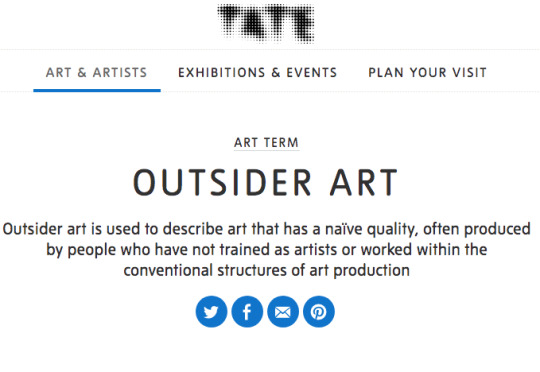
· Art Therapy is a form of outsider art – didn’t attend art uni – is it really outside art?
· ‘The Palestinian Trail of Fish: Artist’s Graffiti dives into heart of refugee struggle’ – response to the bad that is happening around the artists – controversial to make – not following the norm that has been created – comment of immigrants being fish out of water

· “My tattoos, or, rather, my single narrative tattoo, essentially charts the Eastward migration of Buddhism from its Hindu sources in India through its multiple manifestations / incarnations / influences in Tibet, Myanmar, Thailand, Indochina, China, and, finally Japan. Not unlike Shakespeare’s Parolles, from the ironically (at least from Parolles’ point of view) titled All’s Well that Ends Well, before I put my once-discrete tattoos into dialogue, into the development of classical narrative arcing, I was a “man of shreds and patches.” A tattoo here, a tattoo there. I found my nine scattered tattoos aesthetically unsightly. So over an 18-year period I worked (with the help of tattooists from Canada, Thailand, Colombia, India, Israel, Vietnam, and Hong Kong) on establishing an interconnected narrative. A story. But a postmodern story: one that includes, among other things, fragmentation, flashback, back story, interruption, and openendedness. There’s no single reading of my story of Buddhist passage.” – Jason S Polley
Prison tattoos – narrative of their life’s being told – symbols – more semiotics than narrative? – all tattoos follow a narrative – all part of what has made you up – your life narratives – an example of subjugated narratives
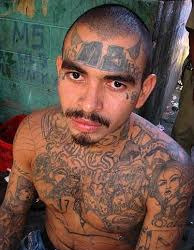
· Everything read as a text – shapes career and outlook
· Graffiti a example of a subjugated narrative – narratives found on built environment - subversive power
· The storyteller Walter Benjamin –
· The nesting place of the storyteller, Walter Benjamin pointed out, are in the loom shed and at the spinning wheel, in the fulling barn and the kitchen when doing tedious tasks - shelling peas in readiness for storing, sorting pulses for bagging, bottling and preserving. Stories were told to alleviate harsh labour and endless drudgery - and they were passed between generations - by the voice of experience, filled with the laughter of defiance, and the hope of just deserts.

· Creating narrative: exploring how makers and designers are using objects and making to tell stories – never used for food and drink but used for narrative
· Narrative fashion – everyone tells stories – fashion designers and brands use narratives to become a storyteller ‘ the expert of storytelling and apparel comes alive’ – the blouse has been passed down from generation to generation – narrative presents itself in clothing

· Creating narrative: exploring how makers and designers are using objects and making to tell stories – never used for food and drink but used for narrative
· Capturing a type of narrative through the aesthetic of craft by semiotics – narratives implied by signs

Set Task:
For this set task I choose to look at staged narrative. This idea came from everyones opinion of the migrant mother photography in the lecture. When asked what they thought they saw her as the mother of America, hard working, etc but no one even the lecturer mentioned that to achieve this photograph many were taken and the end product was staged by the photographer. Alongside the migrant mother I chose to look at the boy with grenade too which follows the same concept.
Dorothea Lange - Migrant Mother


The women is just a subject, ‘an appropriate symbol’ created by Lange
The symbol of the mother is created by the lack of the father figure, two small children holding onto her, the mothers gazing off past the camera - conjures emotions such as empathy but also admiring the mother at the time would of been a symbol of hope
Photograph taken for the FSA a government run project
One of the most reproduced images in history
Lange took a number of photographs of the mother and her family
There's a missing thumb - Lange had a retoucher remove the womens thumb
Constructed narrative - how authentic is the story/narrative in the image
Raises the question what stories are true and what are not?
Child with Toy Hand Grenade in Central Park - Diane Arbus

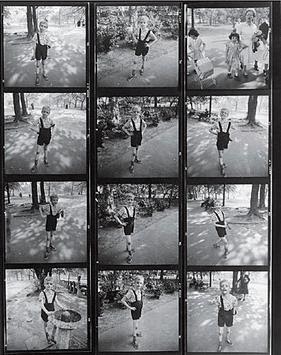
Seminar:
Part one
The colour of pomegranates - is a less literal sense - reveals poets life visually and poetically - little dialogue
Art that tells a story, art that is inspired by a story, art that is composed by existing stories, art that invents a whole new story opposed to a narrative
Artists who explore stories
Susan Hiller, Monument - 41 photographs of memorial plaques, reenactment of how the work is seen - headphones on bench, voice plays through them
Mark Dion, Tate Thames Dig, 1999 - combined banks of the thames - collected hundreds of fragments of history and tokens of life - objects create inner monologue - explores time
Doris Salcedo - Unland -The orphans tunic 1997 - address seems of loss and bereavement - period of three years spoke to children who had witnessed the murder of their parents, how individuals experiences can be conveyed by others - physical distortion that happens within work - distortion of life that happens when you lose someone
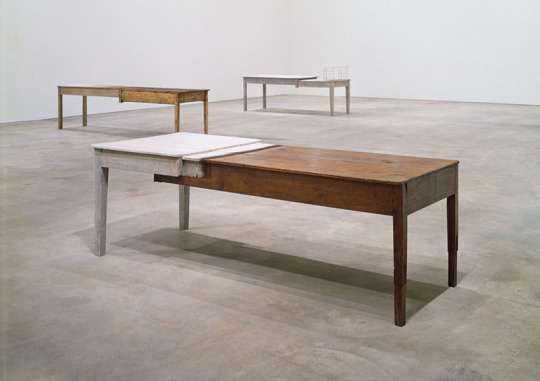
Part two - Anti-Narrative
Desperate need to make stories to make meaning from life - what do we do with anti narrative - when every-things been flipped on its head
Paul Auster - a novel without a lot of detail where the man is - what questions begin to formulate from it? Leaves room for interpretation
Exercise in frustration - full of paradox due to its ambiguity
Without truth are we lost?
Definition - AntiNarrative - methods that challenge the traditional concepts of storytelling - breaks conventions and creates more question than it provides answers
Storytelling and order - need narrative structure for world to make sense
Postmodernism tolerant of ambiguity, style free work, playful work without doubt, allowed to ask a question without knowing the answers - Lyotard, The Postmodern Condition
Contemporary methods of experimentation - blending of boundaries, practitioners rather question that get a clear cut answer
A conversation with the viewer
Subverting todorov - subverting the straight forward narrative structure of equilibrium, disruption and disequilibrium , an attempt to fix it, the new equilibrium

Part Three
Harvard Referencing and Paperpile
Google scholar
Little green arrow on P means it can reference
Have to format from blue hyperlinks
Create reference list from paperpile
Add books onto digital system
Part Four
Planning an Essay
Arrive at an academic opinion
Structure
Introduction( what, why and how?) - what: explain the question, key issues and ideas - Why: why is it important, think of broader context , how does it relate personally - How: how are you going to go about answering the question?
Main Body - setting out evidence , critical framework, two or three key texts, underpinning essay, summarise, analyse and evaluate - could also be comparing two different artists
Conclusion - should set out academic conclusions based on evidence supplied in essay, no new evidence, readdress the questions and explain clearly how they have been addressed and answer within the essay, refer back to introduction and main body of writing
links:
https://www.nytimes.com/2018/11/28/lens/dorothea-lange-migrant-mother.html
Photography:
A Critical Introduction
Third Edition
Edited by Liz Wells
0 notes
Text
“It Rhymes”: Cascading Character Roles Across the Star Wars Trilogies [PART I]

[Disclaimer: PART III of this post chain contains speculation and theories about the upcoming Star Wars – The Last Jedi that, if correct, would count as SPOILERS. While it’s unlikely that my musings are 100% accurate, keep that in mind if your intention is to go into the film completely blind.]
1. Modern fiction and the monomyth
When questioned about the repeating themes and story beats in his two Star Wars trilogies, George Lucas once famously replied: “It’s like poetry; it rhymes”.
View it as a statement on conscious creative methodology or as a middling excuse for predictability, the result doesn’t change: the Star Wars franchise is a creature of recurring plot points and character types, echoing from one iteration to the next in a never-ending cycle of repetition. Which isn’t really surprising when you take into account Lucas’s outstated inspiration from Joseph Campbell’s The Hero with a Thousand Faces, a 1949 400-page essay on the nature and journey of the archetypal hero throughout ancient-world mythologies.
The so-called “monomyth” outlined by Campbell’s influential study hinges on simple narrative categories so engrained into our collective fiction-churning society that we instinctively recognise them wherever they’re used, whether we realise it or not: if a piece of modern fiction incorporates these elements its flavour and texture are those of a “classic”; if it doesn’t, they aren’t. Simple as that.
It’s not even a matter of quality, either. Have these narrative elements endured the test of time because they’re demonstrably better than others? Are they incessantly repeated because they’re iconic, or are they iconic because they’re incessantly repeated? Whatever the case, we’ve seen them so many times in so many different – yet not-so-different – permutations that each new iteration feels like coming back to the same, familiar story, the One Grand Tale mankind has been telling itself for the past four millennia at the very least.
Virtually all pieces of contemporary fiction that proved able to take root in our collective subconscious – what we call “pop culture” – share these same archetypal themes, story arcs and character moulds: properties such as the original Matrix, the Lord of the Rings books and films and the ongoing myth-spinning relay that are superhero comic-books all tapped into that same potential for endless recycling of pre-existing narrative categories.
Yet none leaned into it so hard, and so successfully, than the Star Wars franchise. Its staying power as a modern mythology for the 20th century and beyond is peerless. Is its adherence to the formula uncovered by Campbell a stroke of foresight-imbued genius, or the lucky side-effect of a pedestrian imitation game? I’m afraid we’ll never know for sure, but the results are so self-evident as to make that point entirely moot.
2. Narrative roles in the Star Wars mythology: the Original Trilogy
What’s most interesting, however, isn’t just how Star Wars recycles age-old narrative tropes, but rather how those tropes cascade from one trilogy into another. The now three-trilogies-spanning franchise has shaped into a monomyth all its own, built on a singular story being told and re-told multiple times through a specific set of internal rules.
The first of those rules – I use the term loosely; I’m not trying to pass my musings as exact science here, merely pointing out patterns where they seem to arise – concerns the story and the narrative categories that allow it to function. These categories were established in the Original Trilogy comprised of A New Hope, The Empire Strikes Back and Return of the Jedi, but as you’ll see they can be readily applied to later permutations of the franchise.
At the best of my current ability to analyse the topic, the main character roles that allow the plot of a Star Wars trilogy to hold itself together boil down to seven specific archetypes, loosely defined as follows:
the Selfless Hero – Pretty much what it says on the tin. The Hero is the main active force of good in the story, propelling the plot forwards through a series of choices primarily motivated by altruism. They’re less prone to take part in comedy scenes, and when they do it’s mostly through quipping rather than practical gags.
the Rogue – Coming from a dangerous background, their motives are often dubious. Unruly and undisciplined, they initially align with the “good guys” out of self-interest, and tend to be motivated (even in their positive choices) by personal feelings and attachments rather than by interest in a greater cause of universal good. Among the three protagonists they’re the most likely to take part in physical comedy.
the Warrior Princess – Strong and independent (often to the point of overconfidence) they nonetheless tend to require a lot of rescuing. As noble as the Hero but less misguided in their choices, they serve as the story’s moral anchor. They’re the least likely member of the protagonist trio to get involved in comedy relief.
the Mentor – The Hero’s first teacher and tutor. Killed by the Dark Knight by the end of the first chapter, to form a grudge between the protagonist and main antagonist and to act as an inspirational moral compass.
the Sage – A secondary instructor to the Hero, acting as a connecting figure to past lore greater than the story’s present concerns.
the Dark Knight – The story’s active antagonist, pursuing the protagonists and representing a physical menace. Caught in the middle of a personal character arc that puts them on an eventual course of collision with the Dark Lord.
the Dark Lord – The story’s passive antagonist, acting as a behind-the-scenes mastermind. Less physically involved in battle, they represent an almost incorporeal, abstract concept of evil to be defeated at all costs, portrayed with fewer human qualities than the Dark Knight, if any at all. Much like the Sage, their character is already formed and undergoes no meaningful variation throughout the trilogy.
As far as the monomyth is concerned, the Original Trilogy is by far the most classical of the Star Wars iterations. Its themes and aesthetic – as alluded to in my choice of terminology – lean heavily into archetypal sword-and-sorcery elements: a farm boy with a greater destiny is led by a wizard to the rescue of a captive princess, held prisoner by an evil wizard-king and his right-hand black knight.
As such, it’s also easiest to make the OT’s cast of characters fall neatly into our grid. Here’s how (right-click and “show picture” or “open in new tab” to expand):

3. The Prequel Trilogy: recurring motifs and variation
Things get more interesting as we “backtrack forward”, as it were, to find ourselves in Prequel Trilogy waters. The prequels are a fairly different affair from Episodes IV through VI, but while the substance and setting of their narrative arc play to a different tune from what made the original Star Wars films what they were, the character types inhabiting that narrative are very, very familiar.
The formula we defined when looking at the Original Trilogy can be seen at play here with several overlapping points and a few key variations, first and foremost in the fact that this time around the Selfless Hero isn’t the main protagonist: the prequels’ focus, in accordance with their darker story arc, instead falls on the Rogue, personified by the younger Anakin.
Plot-wise – and also character-wise; more on this in Part 2 of this post chain – the Rogue is defined by change. They start in one position and often end at the opposite end of the spectrum. Han enters the Original Trilogy as a scoundrel and a street rat, and exits it as a decorated hero on track to marry into royalty. Anakin’s arc leads him from slavery – a position of absolute lack of power – to the heights of Force-infused might, from good to evil, and from hope to despair.
All that lays the groundwork for his transition into the Original Trilogy’s main antagonist, creating a precedent for the Hero and the Rogue falling on opposing sides of the good/bad moral axis as they trade their spot in one trilogy’s trio of protagonists for one of the four other positions in the character ladder. This will be a very important point as our analysis moves into predictive territory.
The other roles are filled in with ease... save for one: the Dark Knight category is, admittedly, a bit of a contended spot. In my mind, the Knight is the “villain with an arc”: their motivations – and even their ultimate alignment – change throughout the trilogy they inhabit, whereas the Dark Lord looms as an immutable agent of evil whose personal goals and inclinations are pretty much set in stone.
It could be argued that Palpatine ends up filling the role, as his arc as a villain is at least as well-explored as Vader’s was in the Original Trilogy films; still, as compelling as his final transition from Sheev Palpatine to a full-fledged Darth Sidious is, he only half-fits the bill. More importantly, his role in the prequels’ overarching plotline is clearly more suitably tailored on the “mastermind in the shadows” archetype, a dead ringer for the Dark Lord label.
So the Dark Knight spot is possibly meant to be left vacant, at least if we only take the films as our frame of reference. Instead, things get a lot clearer if we turn our attention towards the additional material provided by the – entirely canonical, unlike the rest of the now-scrapped Expanded Universe – Clone Wars and Rebels animated shows, where Darth Maul is not only revealed to have survived the end of The Phantom Menace, but also goes on to have a complex and extensive character arc.
I don’t agree with the entirety of Belated Media’s What if the Star Wars Prequels Were Good? YouTube series, but I absolutely concur that treating Maul, Dooku and Grievous as interchangeable pawns in Palpatine’s scheme was a major mistake that would’ve been sorted out by simply giving Maul a more developed story arc beyond Episode I. The Clone Wars and Rebels do exactly that and, wouldn’t you know it, his journey begins by killing the Mentor (Qui-Gon Jinn) and ends with him turning against his former master, the exact same arc followed by Vader in the Original Trilogy.
Now that’s what I call a Dark Knight. Our character role chart, thus informed, shapes up as follows:

At this point I’ve hopefully managed to provide you with a solid enough grasp of the system’s general bases. We’re going to need that as we head forward into a second tier of analysis: how plot mechanics interact with character dynamics.
[ NEXT – Thematic classes and the Sequel Trilogy ]
1 note
·
View note
Text
Witch of Space==> Ascend : What is Jade Harley’s Story?
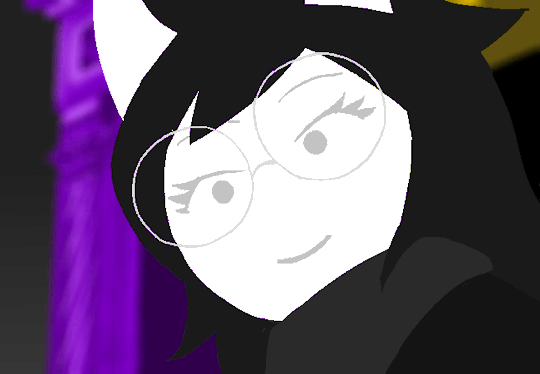
Alright here we go I finally get to write about Jade. My biggest Homestuck secret is that for how relatively little I talk about her, Jade is actually probably my favorite Beta kid.
I love the others and Rose and Dave in particular are intensely personal to me but Jade vibed with me in a way pretty much no character in fiction ever did because she’s an unabashed furry and that’s basically the subculture that raised my preteen catholic ass.
So Jade means a lot to me, and the way her narrative grows has always spoken to me as much as Dave’s narrative about overcoming toxic masculinity, or Rose’s struggle to find existential meaning. In a way, Jade’s struggle IS Rose’s struggle! Jade and Rose have narratives that lead us to twin conclusions about the nature of Homestuck’s reality.
That’s getting ahead of myself though, and I’m going to do this wild thing where I try to impose some structure on my approach so hopefully you can come away with a clear idea of what I think Homestuck is doing. (I want to give special thanks to @landofsomethingsomething for helping me out with the feedback that led me to striving to improve in this respect.)
So. This post has three thesis statements that I hope you come away with at least seriously considering, if not outright buying into.
1. Jade’s character arc was as thought out and deliberate as any of the kids’. She was not “shafted” by the story. The two reasons fans most likely seem to think she was were the Three Years trip she spent alone, and that she “didn’t do anything in Collide”. I believe both are misreadings of the canon.
2. Jade’s arc is meaningful both for herself and for the broader narrative, and builds to one of the most important revelations about Homestuck’s universe.
3. Jade and Davepeta are not only canon but deeply romantic, and Davepeta stands to improve one of the biggest reasons fans feel Jade got “shafted”--not to mention that some fans might take issue with Jade’s lack of a romantic arc, and Davepeta...well...is her romantic arc.
But before we can talk about where Jade’s arc succeeds, we need to talk about what it is, which means we need to talk about her title--Witch of Space. For the record, here’s my view on the mythological roles:
They aren’t a pasted on set of superpowers, and they aren’t given to the kids by Skaia. The titles describe the nature the kids had all along, and the way their patterns of thought reflect onto the world around them. They also foreshadow their narrative arcs and trajectories in their entireties--Just like the titles Hussie was inspired by in creating the system, the Hero of Time and Hero of the Winds structure from the Legend of Zelda.
I’ll begin by tracking Jade’s similarities to her fellow Witches and Space players. By pointing these out I believe I should be able to give you an idea of what I think Jade’s arc is about, exactly.
After that, I’ll expand my reading of Jade as a Witch of Space to include her later narrative turns, as well as explaining how I feel Davesprite--and later Davepeta--is inherently tangled up in her arc, as well as being a better romantic partner for Jade than basically anyone else in the story.
Let’s go. I’m hoping this is the beginning of something really excellent.
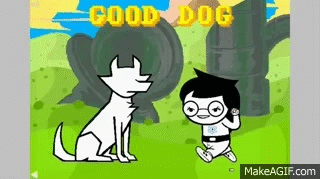
Where lies the Witch’s magic?
The first striking similarity between Witches is their bond with an outside force much more powerful than they are representing their Aspect. For Jade, this is Becquerel. For Feferi, it’s Gl’bolyb-who is about as Lifey an entity as it gets. It is, after all, defined by being unknowably massive, incomprehensible Living things, with conscious awareness of its own.
It is simply a completely alien kind of Life to our own, and thus the Cosmic Horror. Gl’bolyb also requires the consumption of vast quantities of Life that Feferi has to provide it, tying it to Life’s themes of edible consumption. More on Life stuff when I write about Jane soon, though.


Like Jade, Feferi has little direct power early in her life. But she’s able to accomplish stunning feats through her connection to her guardian--which functions effectively as a Witch’s familiar. Before ascension, a Witch’s power is linked to the symbol that identifies her as a Witch in the first place.
Feferi is also ambitious. Not only did Feferi originally aim to change the rules of Life in troll society imposed by the Condesce’s will, but through her connection to the Horrorterrors, she’s able to fundamentally change the rules of Life on a metaphysical level, allowing Ghosts to exist inside dream bubbles in an unnatural limbo.
Damara has an outside power figure linked to Time, too--Lord English, who she associates with and wishes to work for. She also changes her relationship with Time--turning it into a weapon to use against her friends as revenge as opposed to a tool and series of systems she needs to serve like Aradia and Dave do during their sessions. She’s quite willful and ambitious about both her relationship to her “Familiar” and her use of her Aspect.
Both witches are driven primarily by their own ambitions and desires, and both witches are also fundamentally Changed by their Aspects. Feferi loses her life and becomes a ghost, her will becoming almost indistinguishable from the Horrorterrors’. And Damara’s primary use of her Aspect coincides with a drastic change in outlook and personality, making her cynical, bitter, and willing to serve her Familiar over connecting with others.
Now--if Witches are ambitious about and defined by both changing and being changed by the domain of their Aspect, then what is Jade’s field of ambition in this regard? To answer this question, it’ll help to look at her fellow Space players.
The weight of Space

We don’t see Porrim pre-session, but from their introductions, Jade, Kanaya and Calliope are all defined by a unique passion for Sburb. This makes sense--Sburb, after all, is the construct that defines the Space they will exist in their entire lives.
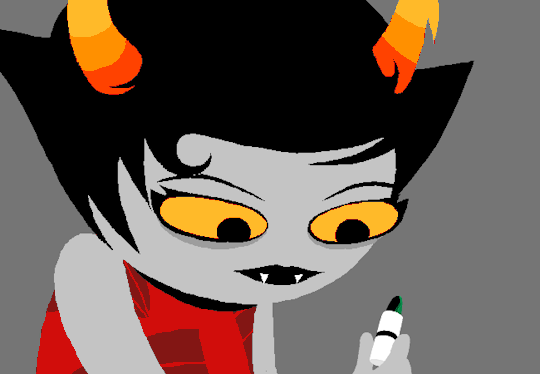
Waking early on Prospit also essentially makes them grow up in two environments--places--at once, meaning that they grow up influenced by the culture inherent to two different environments.
This is particularly notable with Kanaya, who is uniquely untouched by Troll culture compared to her friends. Her morals are much more aligned with Sburbs’ spirit of growth and cooperation, and she takes a passionate interest in fashion--which is to say, the expression of ideas about oneself through clothes.
This kind of self-expression is something Sburb encourages constantly, and is in fact it’s core philosophy. Kanaya internalizes it completely to such an extent her identity is created by her relationship to Sburb--and Space--much more than by her relationship to Troll culture. Calliope, too, is so inspired by Sburb’s philosophy of cooperation and possibility that it works against her Cherub sociology.

This connection also allows them to use the insight gained from one environment to influence the other. Space players tend to set the stage for their own sessions, laying the Setting for their games in their own unique ways.
Calliope--the Muse of Space--inspired Dirk and Roxy to set the stage for the Alpha session, and influenced Jake into setting the stage for the Beta session as well. Lord English’s particular exploitation of Trolls was also influenced by her, setting the grim stage for both the troll sessions as well. Kanaya used Rose’s guide and her visions to help set up her session, too.
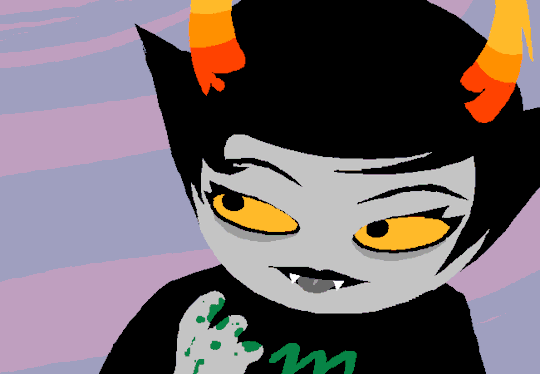
Finally, all Space players seem to end up somehow becoming entities they surround themselves with and are influenced by in life, in this sense being drastically affected by their own environments. Kanaya grew up influenced by troll rainbow drinker novels, and just so happened to develop an affinity for the Alternian sun.

And once she died, she was outright reborn into one. Sylphs being the Passive Creation class, this makes sense--Kanaya heals and Re-Creates herself as her own ideal image. If her ability to do so is intrinsic to her being, that’s no surprise, since Sylphs are considered a kind of Fairy or Elemental, and so are intrinsically connected to and created by their Aspect.
Once she transforms, she gains super speed--ie: an increased ability to navigate space-- and the ability to fill her environment with Light, which she always found highly desirable. This pattern is repeated across Space players--Calliope is able to inspire others to see her as a Troll, while Jade is able to deliberately Change herself into a Furry. More on that later in this essay.
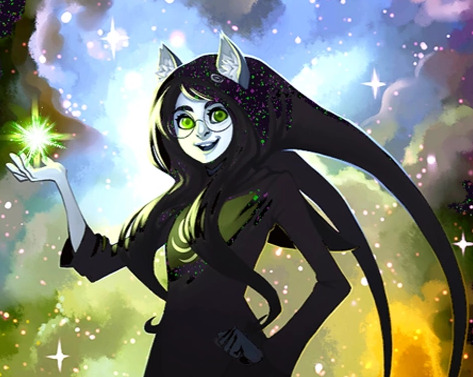
Now a picture begins to emerge.
The Witch is the Active Change class. One could parse the title as:
One who Changes X, or Changes through X.
With the corollary attribute of One who is Changed By X.
And as Sburb defines everything about the setting of Homestuck, and the enviroments of Space players growing up. And given Witch’s ambition and zeal, it makes perfect sense to think Jade’s ambition and execution would concern Changing not just Space, but Sburb itself.

Which is true! Among the main kids, Jade is uniquely passionate about actually playing the game. She sets up her session, gets Rose interested, and takes charge of orchestrating and executing the plan that leads to the Beta’s victory.
And she is uniquely changed by the environments the game exposes her to--the divide between Jade’s Dream Self and her Waking Self is by far the widest of any Player.
Dream Jade is relatively pampered and aloof, and while having access to a whole other world makes Waking Jade’s life far less distressing and lonely than it might otherwise have been, she still ends up more practical.

And once the game really gets going, also more demanding. In her desire to protect people and be an asset, Jade holds herself to a very high standard. As such, she actively tries to be strong and keep an upbeat attitude, and in execution Jade’s approach to this is quite similar to John’s--she ends up coming off as weirdly emotionally detached from the consequences of what she’s doing.
The difference is that Jade willfully uses that detachment for her own benefit, like Jake does. After all, reviving Dream Jade this way directly leads Jade to becoming a God Tier, and embodying Space as a First Guardian.

Dream Jade, meanwhile, dies, and is greatly changed by the stagnancy and fatalism inherent to the Dream Bubbles. Jade tries to comfort Jadesprite, but this also brings us to another core facet of Jade’s. Jade has a habit of bottling up her emotions in a big way, like Jane. Jade wants to be reliable and useful, and to her that parses as a focus on practicality and solution-oriented thinking.
So when Jadesprite--who’s another version of her--fails to live up to her standards, Jade tries to be caring... but tries to find practical solutions which go ignored as Jadesprite copes with the trauma of her circumstances. Jade’s frustration with the game, with Jadesprite’s defeatism, and with Jadesprite as a reflection of herself build until finally she gets fed up and...
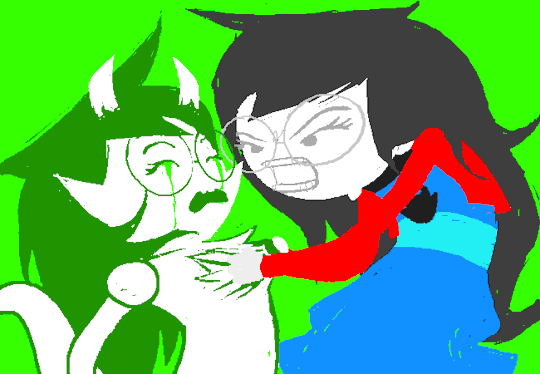

Blows a gasket. Jade’s got self-loathing issues just like anyone in Homestuck, and for her they manifest as being angry at what she could’ve become under different circumstances. She hates Jadesprite for being so malleable to her environment, and for being something she sees in herself--Selfish. Jade didn’t think too much about Becquerel before creating Jadesprite, after all, did she? Active classes are intrinsically self-motivated, and Jade is no exception.

Jadesprite is the only character Jade is quite this cruel to other than Karkat, who torments her for years and exhausts her with hyperemotional debates that distract her and waste her time. But this attitude is still something she carries across her relationships. She’s kind to Tavros, but his logic turns circular for long enough that she gets frustrated and turns their attention towards practical matters.


She extends much more time and patience to her friends, consoling Rose when her Mom dies...but even then is immediately concerned about what she will do with her feelings. In this pesterlog she also begins to question the nature of the game they’re playing, beginning to note Sburb seems outright cruel at times--foreshadowing her more intense struggles with the nature of the Space she inhabits.

Which brings us to Davesprite. Dave and Jade had a special relationship growing up, and Davesprite is a Dave brought into being by the game Jade is so invested in. And Davesprite is the one who finds Jadesprite at her lowest, and comforts her. He then makes her aware of her own power...

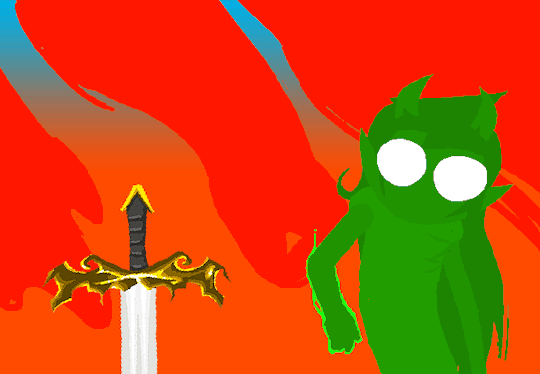
And encourages either Jade’s first great feat of magic as a Witch of Space. Immediately after this, Jade ascends, becoming one with Jadesprite and bringing the entire session under control--an action Davesprite bears witness to in it’s entirety. Soon after, Jade and Davesprite start dating during the three year’s boat trip. But…

It doesn’t work out. Why?

Well, there’s two reasons. The first is that Dave is an abuse victim, and that isn’t really the kind of trauma Jade could easily relate to--she’s been exposed to neglect and isolation, but the experience of being subjugated under an overbearing guardian would be alien to her-- and she never takes it particularly seriously growing up.

Grimbark Jade clues us in on the second. Davesprite also feels set apart from the kids, distanced by his Sprite status. He considers himself auxiliary to Alpha Dave, the same way Hal does with Dirk. John even rubs it in a couple of times, and openly wonders about Davesprite’s importance relative to Alpha Dave himself. And of course, Davesprite himself admits it.
This is something Jade can relate to to some extent--she was solely a Sprite for a time, and distanced and set apart from all society besides that. But the game fixed both of those for Jade, through bringing her closer to her friends and God Tiering. Not so for Davesprite.

Note what these issues have in common, though: Neither abuse trauma nor existential marginalization are problems that come with practical, tidy solutions--which are Jade’s instinctive method of dealing with things.
Jade wants to look for something to Do about everything, but there’s nothing to really Do for Davesprite. So Jade bottles her feelings of frustration up, only to have them come out when she goes Grimbark. But even while evil, brainwashed, and pissed off about Davesprite breaking up with her...

She still sticks up for Davesprite’s validity and personhood. Now, let’s move on to the retcon.
Davepeta happens, obviously--Nepeta acting as a Rogue to “Steal” Dave’s Heart for his own benefit. Davesprite transcends both his issues with his Bro and his tortured sense of auxiliary identity. Nepeta benefits from this arrangement, too--but we’re talking about Jade, so let’s see how the retcon treats her.
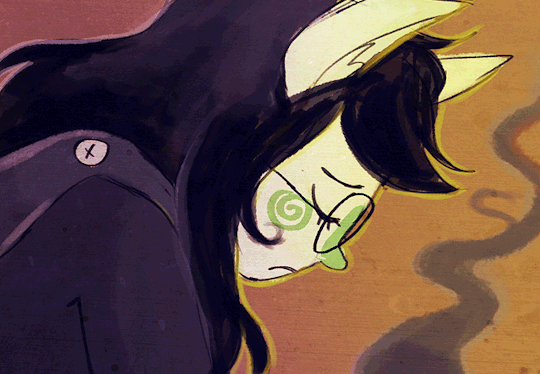

In the Post-Retcon version of the three years trip, Jade ends up completely alone and isolated. Fans usually hate this about her arc, but hear me out, because this is where I make my case for the first point I laid out at the beginning of this:
This isn’t just about tormenting or “shafting” Jade. It isn’t Hussie being lazy or not caring about her. Jade is struggling with her Aspect, the same way Dirk is tormented by his Splinters, Terezi by her Choices, and so on. And as she struggles with Space, she also struggles with the Game--and the label it seemingly “assigns” her. Space. She dreams about and meets Alt!Calliope, who tells her the Game has ordained this tragic reality for her, and as a result Jade feels distanced and set apart from her friends--just as Davesprite once did. When she meets Alt!Calliope again, she reinforces this notion, seemingly telling Jade that it is in a Space player’s nature to be alone.

But that’s not all she tells her. As she’s exposed to the fully-fledged Muse of Space the longest, Jade is also uniquely privy to the deepest secret of the nature of all of the entire Homestuck multiverse. A secret implied and built up to literally from the moment John first bites Sburb’s apple and enters the game(citation pending--I’ve got that video recorded already):

That Paradox Space is composed out of the abstractions of thought called the Aspects. This is the root of my second point, that Jade’s narrative is important both for herself and the wider Homestuck story--not to mention our understanding of it’s Multiverse.

The implications of this stunning revelation are enormous. Calliope literally states that ideas are made up of the Aspects, and what the Alchemy system does is make physical objects out of ideas. All of Paradox Space grows outwards from these twelve tiny elements of thought, and so reality is literally something created by those perceiving it. In Homestuck, existence is created by thought--and so too is all physical matter.
This is why I argue all depictions of Light in Homestuck symbolically contain the Light Aspect’s fundamental ideas--because Light as a physical presence is simply a concentrated enough amount of Light aspect abstractions to be visible in physical reality. The same is true of every Aspect--in this same sense, you can argue all food is made out of Life, and all absence out of Void.
Imagine being granted the key to understanding the entire universe. That’s what is happening here. Jade doesn’t understand all of it right away, but the core idea gets across. And understanding the true nature of reality this way could take Jade’s interest in science to an entire other level. There’s practically no limit to what she could do with this information, I mean--if all of reality is created by thought, then what are the real limits of what’s possible for anyone?
Having delivered this information, Calliope leaves--leaving Jade as close to the biggest symbol of Space in the comic--the Green Sun--as she could get. Jade lingers, waiting, under the impression she is inherently meant to simply comply with the will of her Aspect and Paradox Space, when along comes…
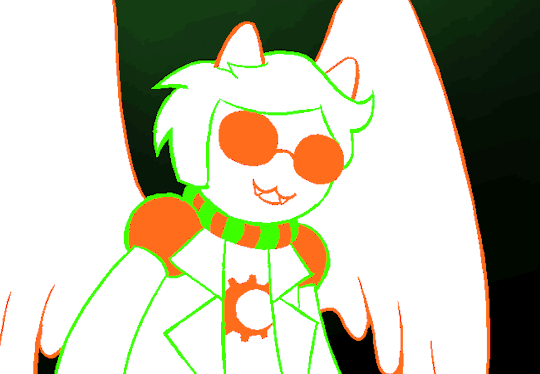
Davesprite, freed of all the issues that made their relationship originally unworkable. Only now it’s Davepeta, and Davepeta is a wholly new entity, completely and utterly defined by their relationship to the Game that functions as one of Jade’s primary domains of power and influence. It would be literally impossible for Jade to have met any version of any person even remotely like Davepeta elsewhere. It had to be here. It had to be through Sburb.
Davepeta also has unique insight into the nature of the Player’s ultimate reality, and is one of the few characters with more insight into that reality than Jade herself.
In keeping with the Light motif with Homestuck’s romantic relationships, Jade lingers in the dark Void of her loneliness, not knowing whether she should Do anything, by a hyper-incandescent 2xSprite, an entity literally created to provide aid and information as well as giving off Light physically.
As if that weren’t enough, Davepeta is also a twice over Passive player--a Knight who serves their friends Time, or serves them through Time, and a Rogue who can Steal Hearts for the benefit of others.
And Davepeta is also coded as a cat and a bird, simultaneously--the two animals most commonly associated with Witches.
Do you see where I’m going with this? Now that Jade is a fully ascended Witch who has mastered Space, along comes Davepeta, framed perfectly to act as the Witch’s Familiar. A Familiar whose existence reflects not just dominion over Physical Space, but mastery over both Sburb and the nature of Paradox Space.
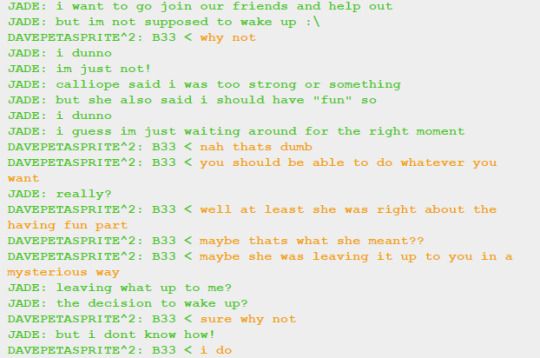
And what does Davepeta do when it’s, for once, Jade at a loss for what to do next, trapped in a circular spiral of logic on whether to even move forward? Davepeta says that’s dumb, and that Jade should do whatever she wants to, and offers her a practical solution to help her do it. Making it clear that Davepeta is capable of being a partner and aid to Jade’s desires and ambitions.
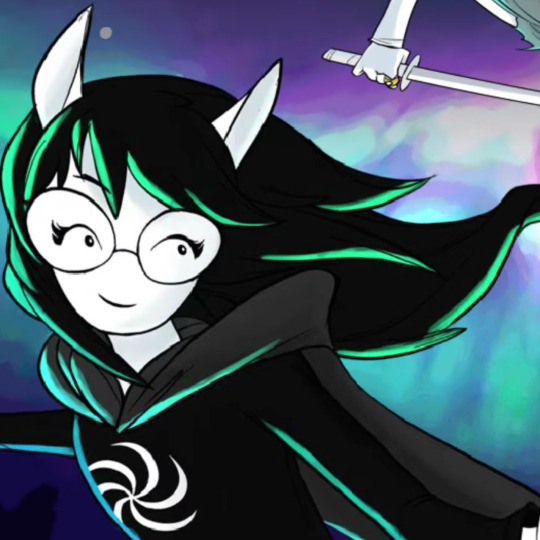
Jade then wakes up, and decides to follow Davepeta’s (and Calliope’s) advice: She has fun.
In Collide, Jade chooses not to fight, but rather to use her space powers to play with Bec Noir and PM, distracting them and keeping them busy. Doing this leads her to Changing the game in the most powerful way possible.
The two First Guardians are completely equalized by Bec’s influence on them, making them equal in power...but also giving them equally powerful feelings of love for Jade.
This gives PM the advantage. PM is the one able to control her own emotions, find nuance in her situation, and take a middle solution between really hurting Jade and complete inaction--which Jack is unable to do.
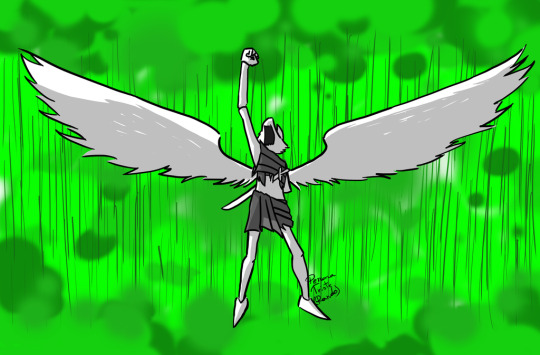
By setting up this situation, Jade turns the core fatalism of Sburb on it’s head--setting up a scenario where White can do the impossible and defeat Black itself. That’s about as “Changing” the nature of “Space” as it gets--a Witch of Space, fully realized.
And now Jade is hanging out, happy with her friends and not lonely or isolated at all. Jade is having fun and enjoying herself on Earth C. That’s a pretty satisfying narrative, as far as I’m concerned.
Jade struggled, but she also gained unique insight and knowledge entirely in keeping with her Aspect. At the very least, considering the importance of the information Jade got from her journey and all the thematic imagery surrounding it, I think it’s likely that approach was intentional and not a byproduct of Hussie “not caring about Jade” or “shafting” her.
Whether you guys do or don’t like where he took Jade’s arc is another conversation, albeit one I’m willing to have--I’m just arguing there was intent behind the chaos.
That said, now I’m going to do something I don’t usually like to do, and speculate about Jade’s future a little.
I personally think Jade’s “arc” is complete enough as it stands now--Davepeta’s a compelling romantic partner, but it’s not like Jade necessarily needs a romance in the first place. I won’t be upset if I end up wrong about this stuff-- I just think the nature of all this build up between Jade and Davepeta makes it more likely than any alternatives I can think of.
So here’s some thoughts about the Epilogue you may want to consider:
Whether Davepeta will survive to meet up with her again is, admittedly, an open question...but considering all this narrative buildup, the fact that we already know Sprites exist past the end of the Game, and that Davepeta already fought Lord English and survived, I have a hard time believing they’re going to be killed off at this point.
Especially considering [S] Credits is clearly setting up the Masterpiece, and if we see the Beta kids get sucked into that Juju it’s likely we’ll also see them pop out the other end...in the Void, where Davepeta is.
And one last thing:
We already saw Roxy steal something from nothing, so it’s not impossible to think Davepeta could reach across the Timelines they already see, and steal the Heart or Time Game Over Jade spent with John and Davesprite in the original timeline back from the Game that took those experiences from her--fitting into Jade’s motif of Cheating the game to suit her desires.
This is the nature of my third and final point--that on top of everything else Davepeta adds to Jade’s narrative, they could subvert the lasting pain and suffering the Game inflicted on Jade across those three years, enabling her to remember her relationship with Davesprite, and also potentially giving John and Roxy another person who remembers the old timeline.
No idea if that’s gonna happen, or be shown in detail if it is. I just think that given the sheer depth in which Davepeta’s and Jade’s arcs are interwoven, it’s not impossible. If it doesn’t, I’m personally pretty happy with Davepeta giving Jade some good advice and helping her out at the end. Feel free to let me know what you think! :)
Alright, that’s all I got on Jade for now, guys. Hoping to write one post about Jane soon, but I’m going to be refocusing back towards video editing and job hunting, so these written posts may slow while I devote more energy to making videos. This has essentially been a side project to my Homestuck, Explained series as I gathered my thoughts on the endgame enough that I thought it warranted posting some more of them.
If you’re interested in enabling me to write more of these posts and making more videos, it’d be cool of you to check out my Patreon. We’ve got a neat little Discord community of Homestuck aficionados thinking and talking about a bunch of different Homestuck analysis topics, and doing so can also get you perks like previews of my video scripts and previews of the videos themselves.
That’s all for now, peeps. As always, thanks a ton for reading.
See you again soon, everyone.
Until then, Keep Rising.
#Homestuck#Jade Harley#Davepeta#davepetasprite^2#Classpects#Witch/Heir#Sylph/Maid#Witch of Space#My MSPA Analysis
798 notes
·
View notes